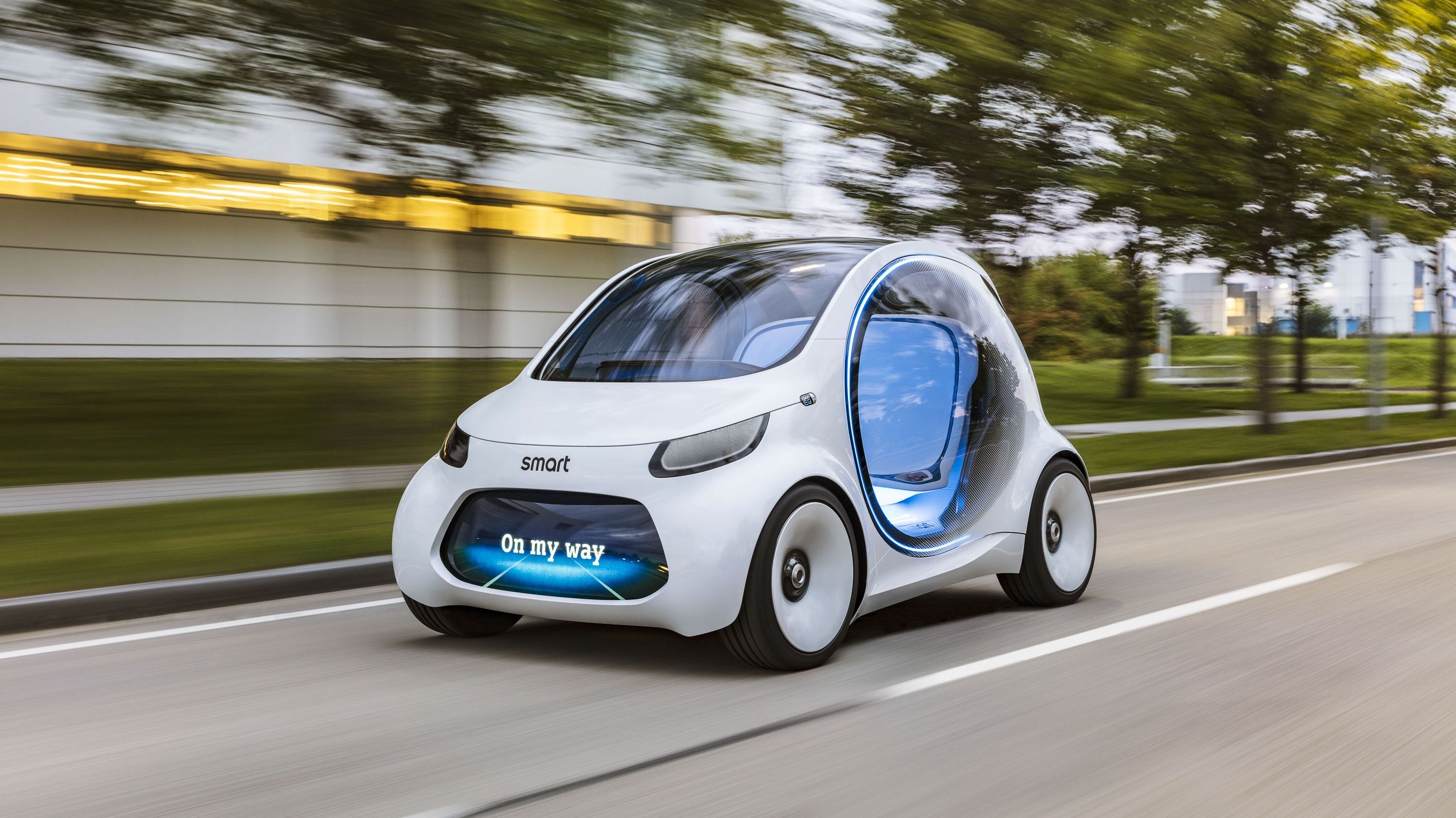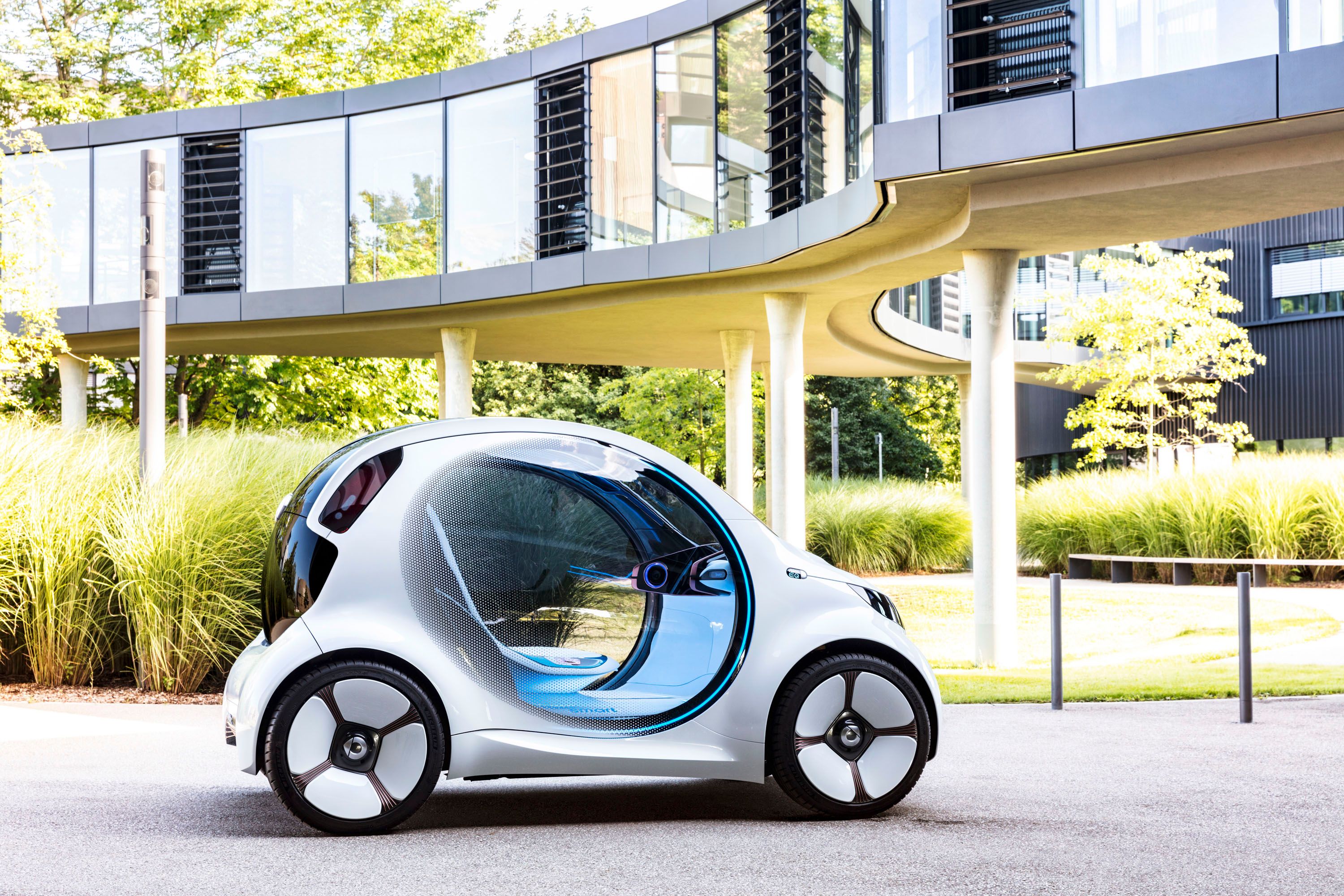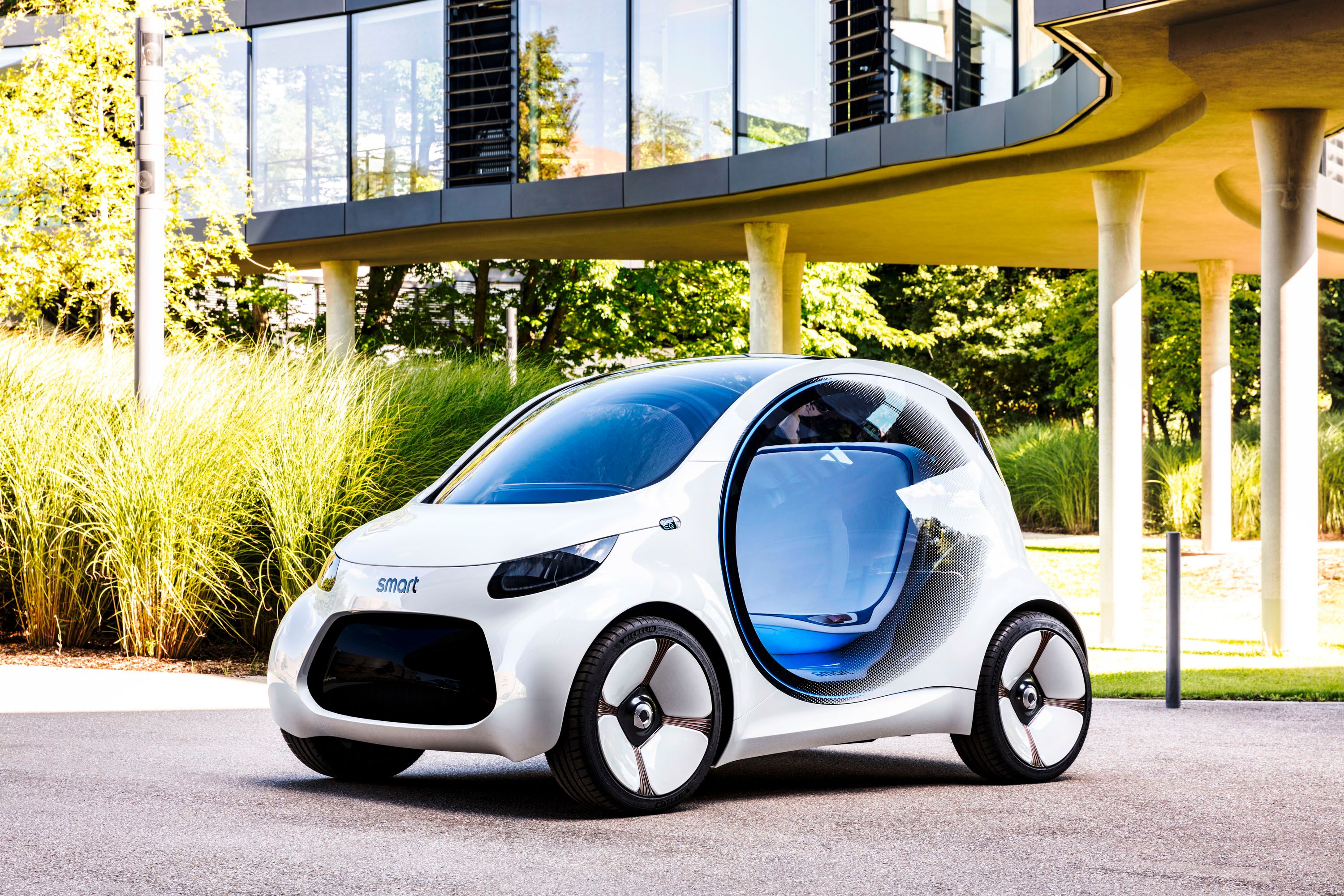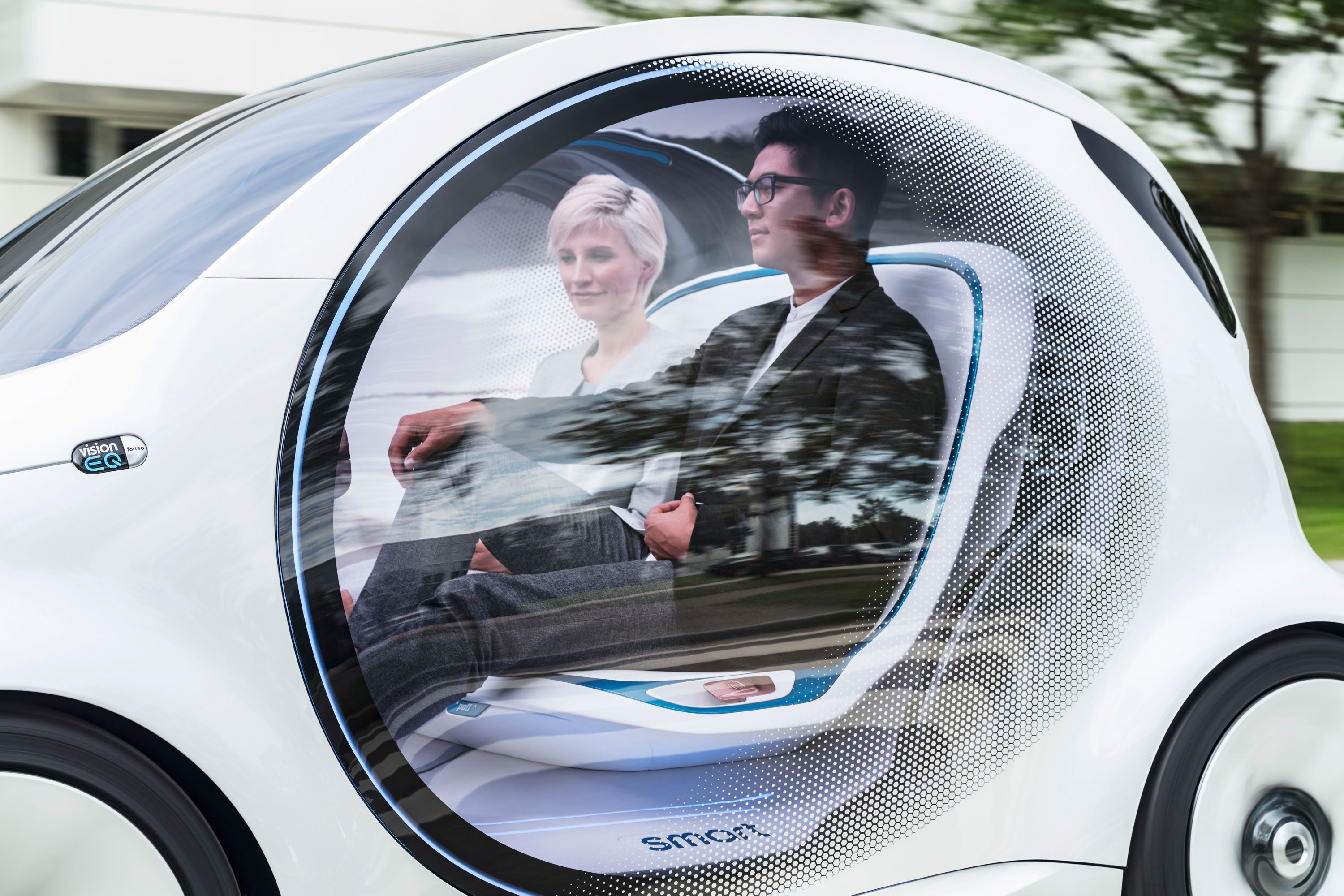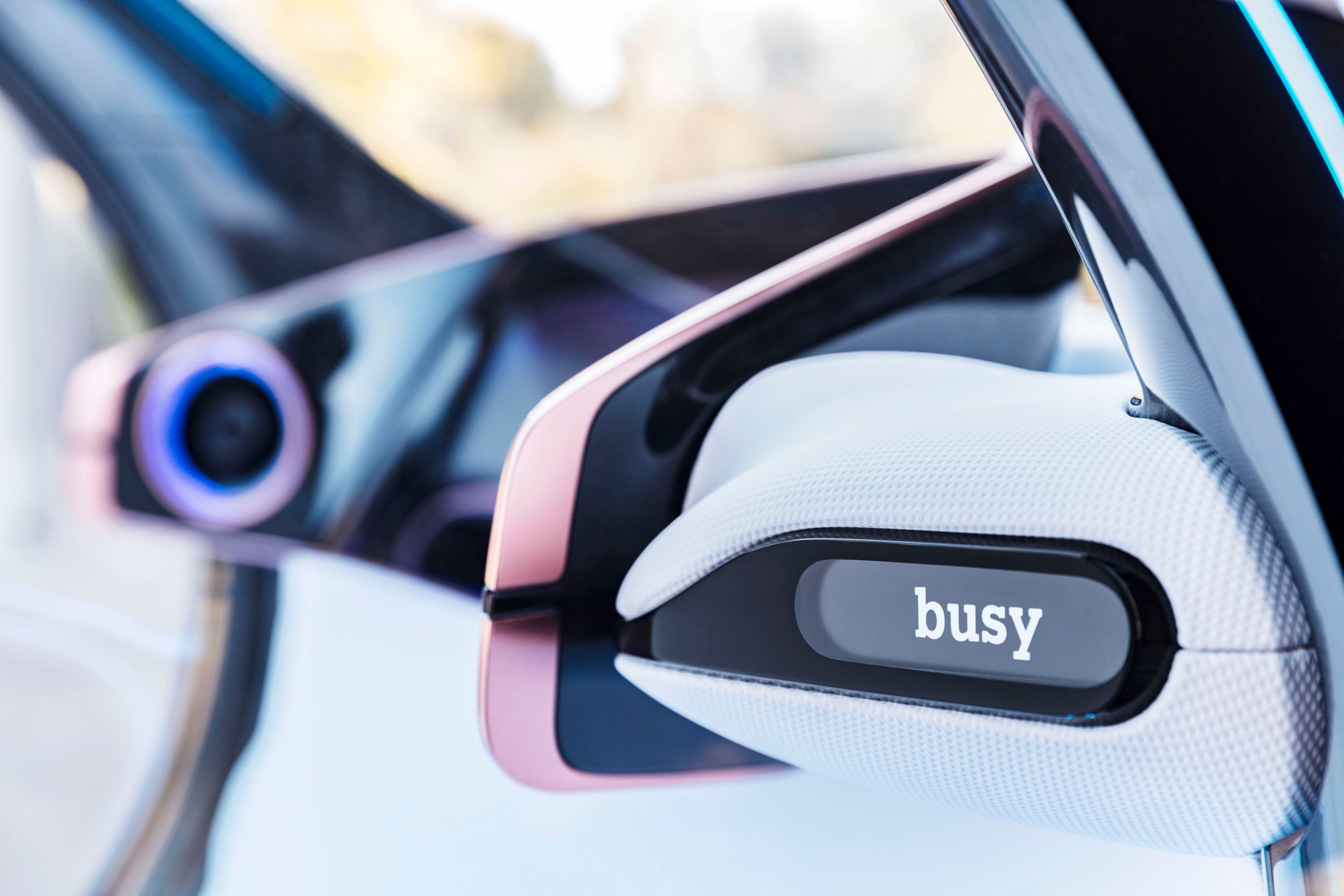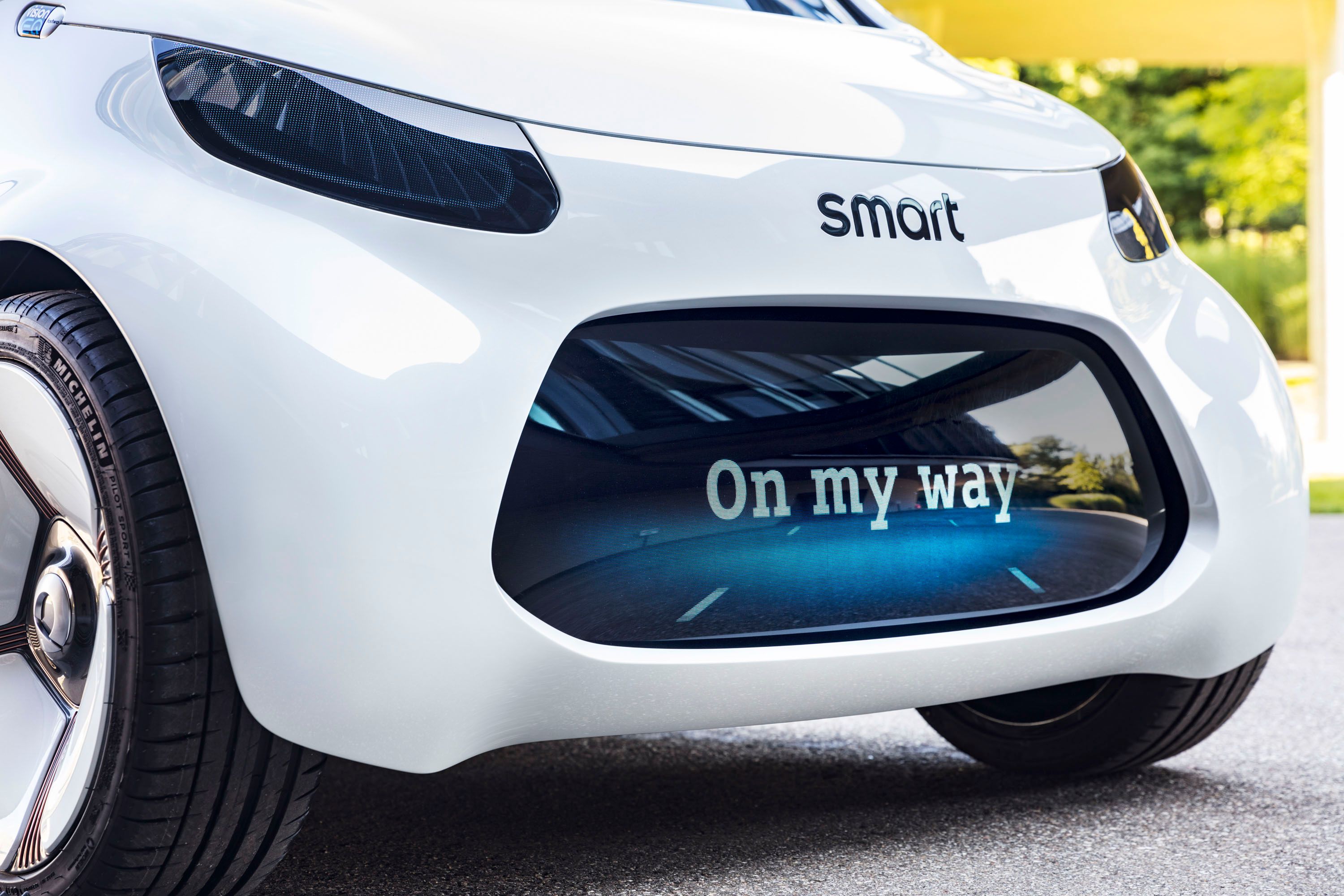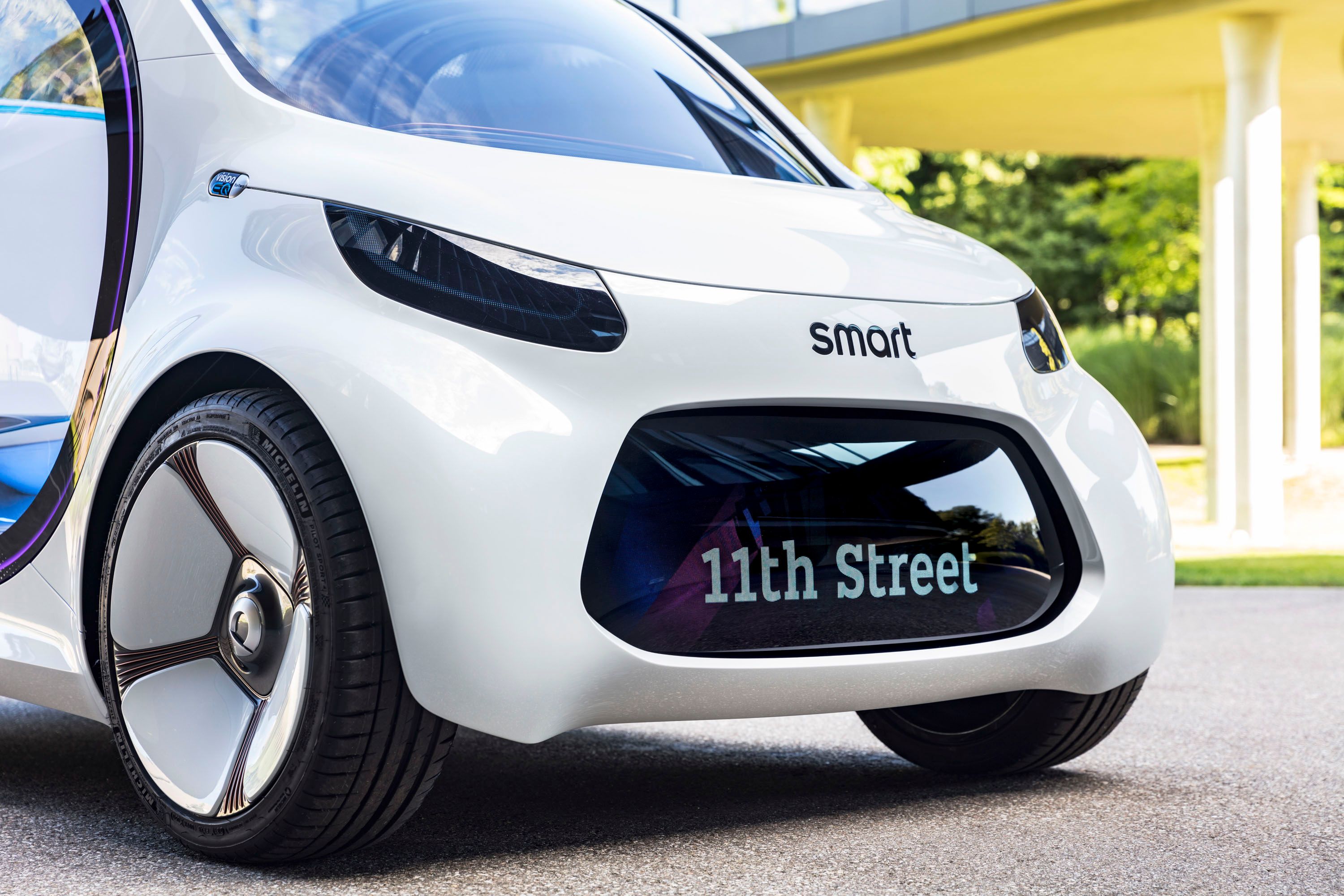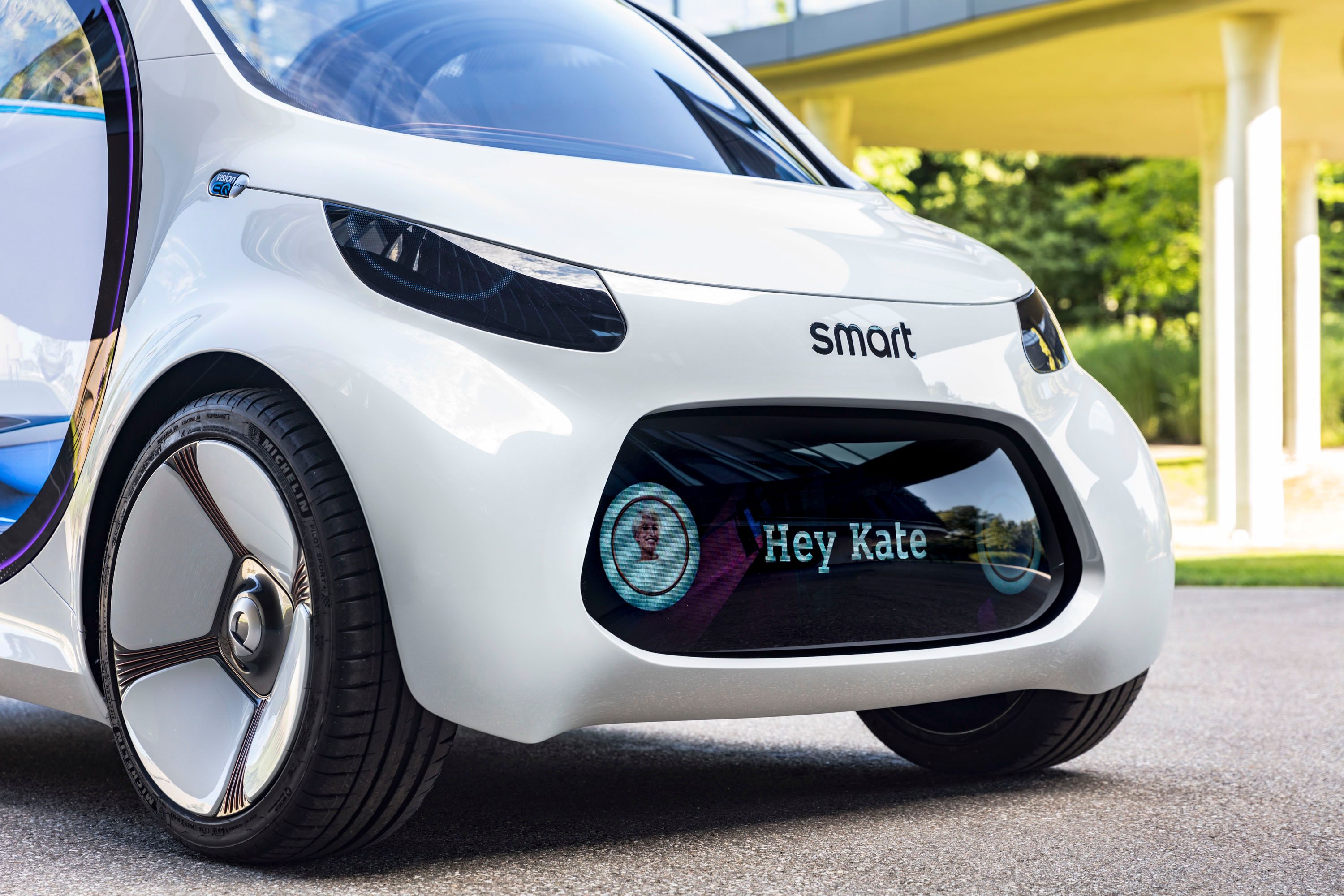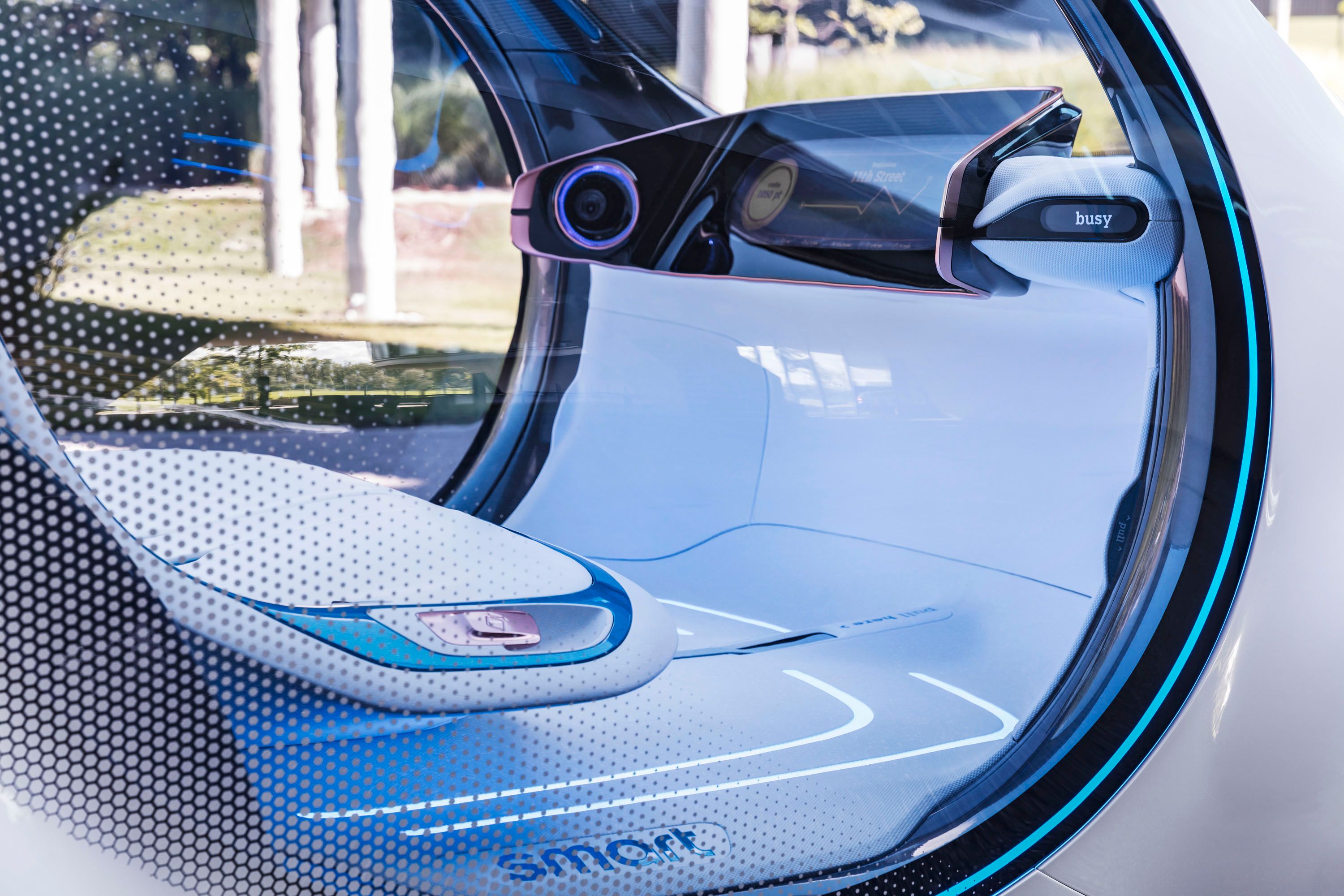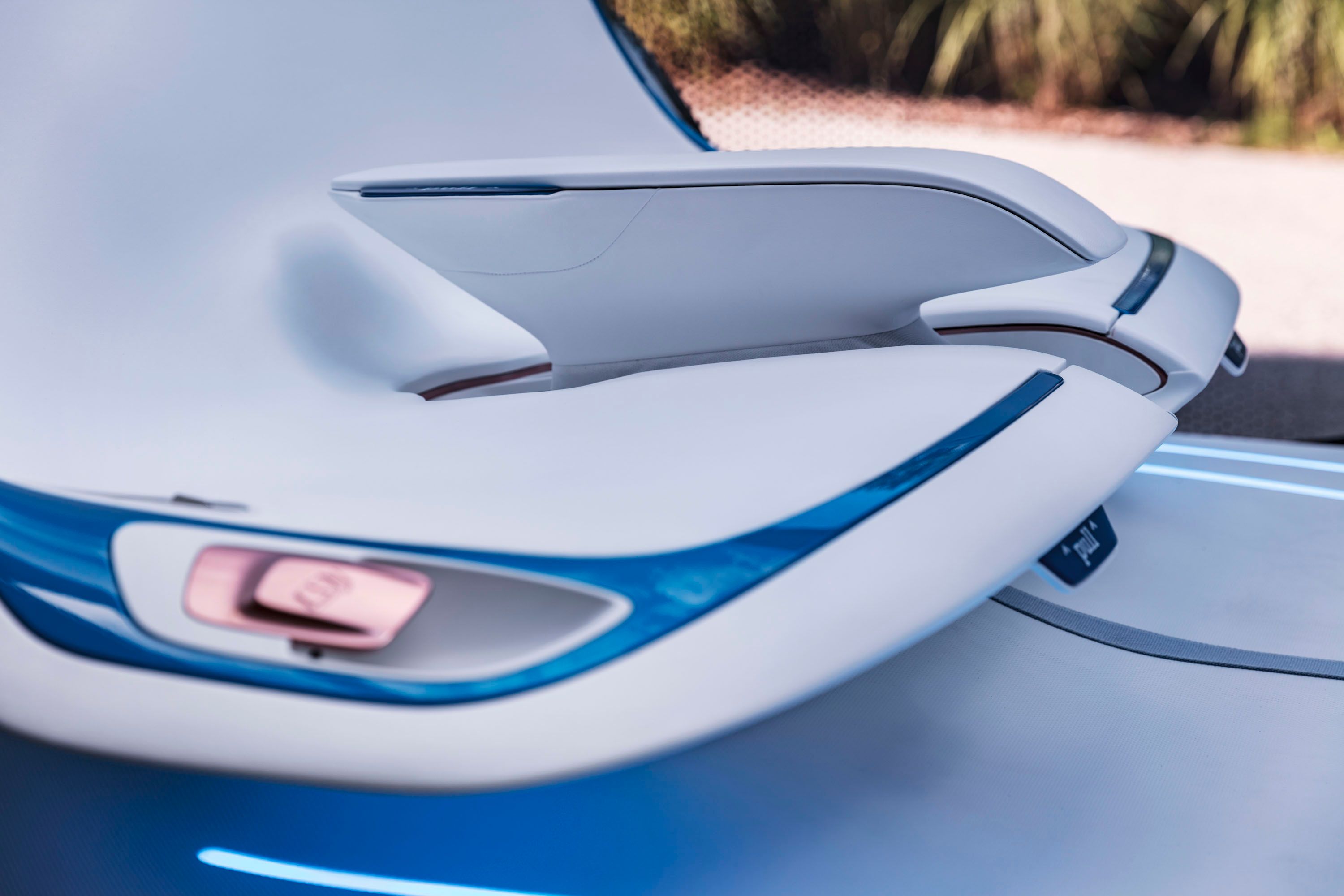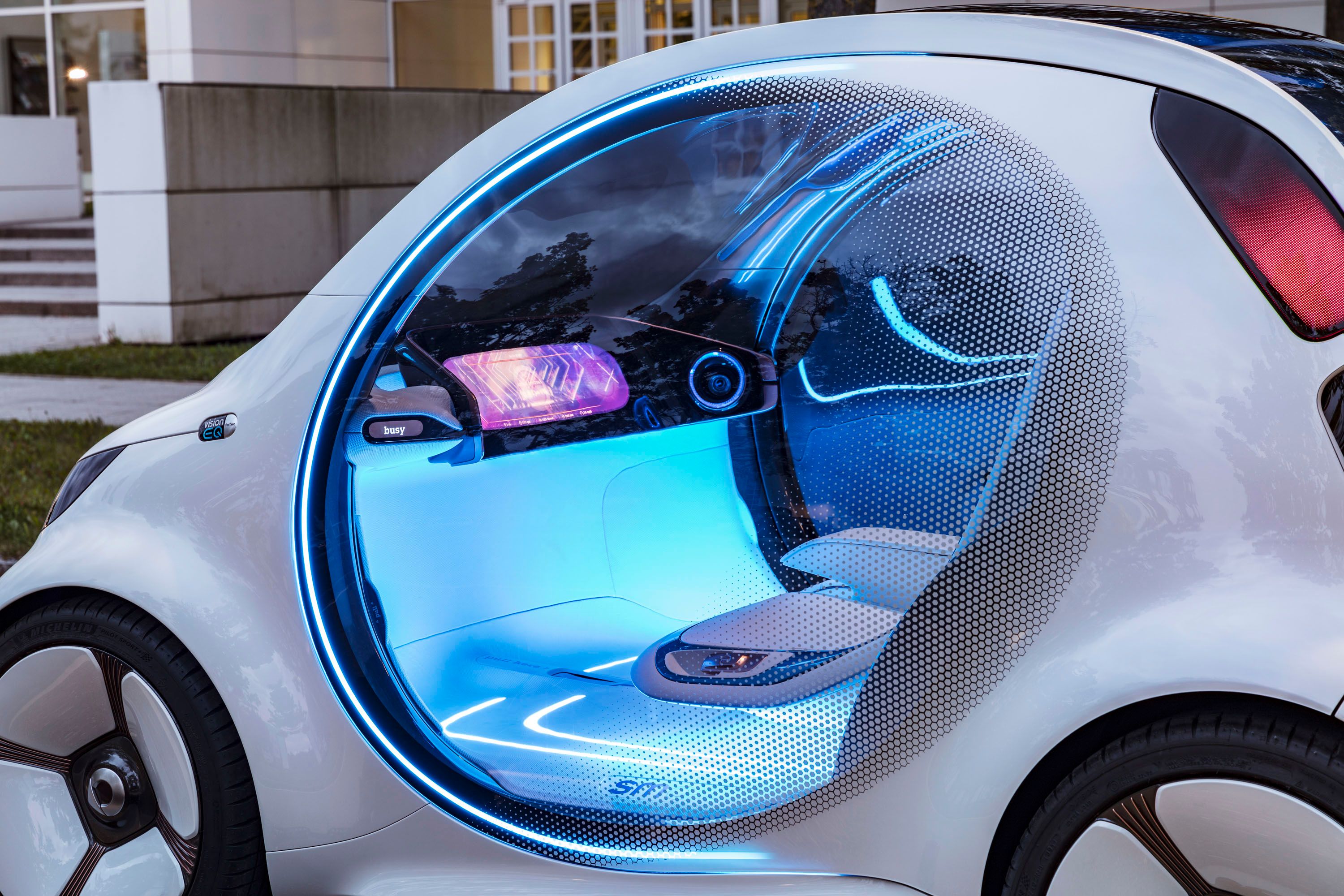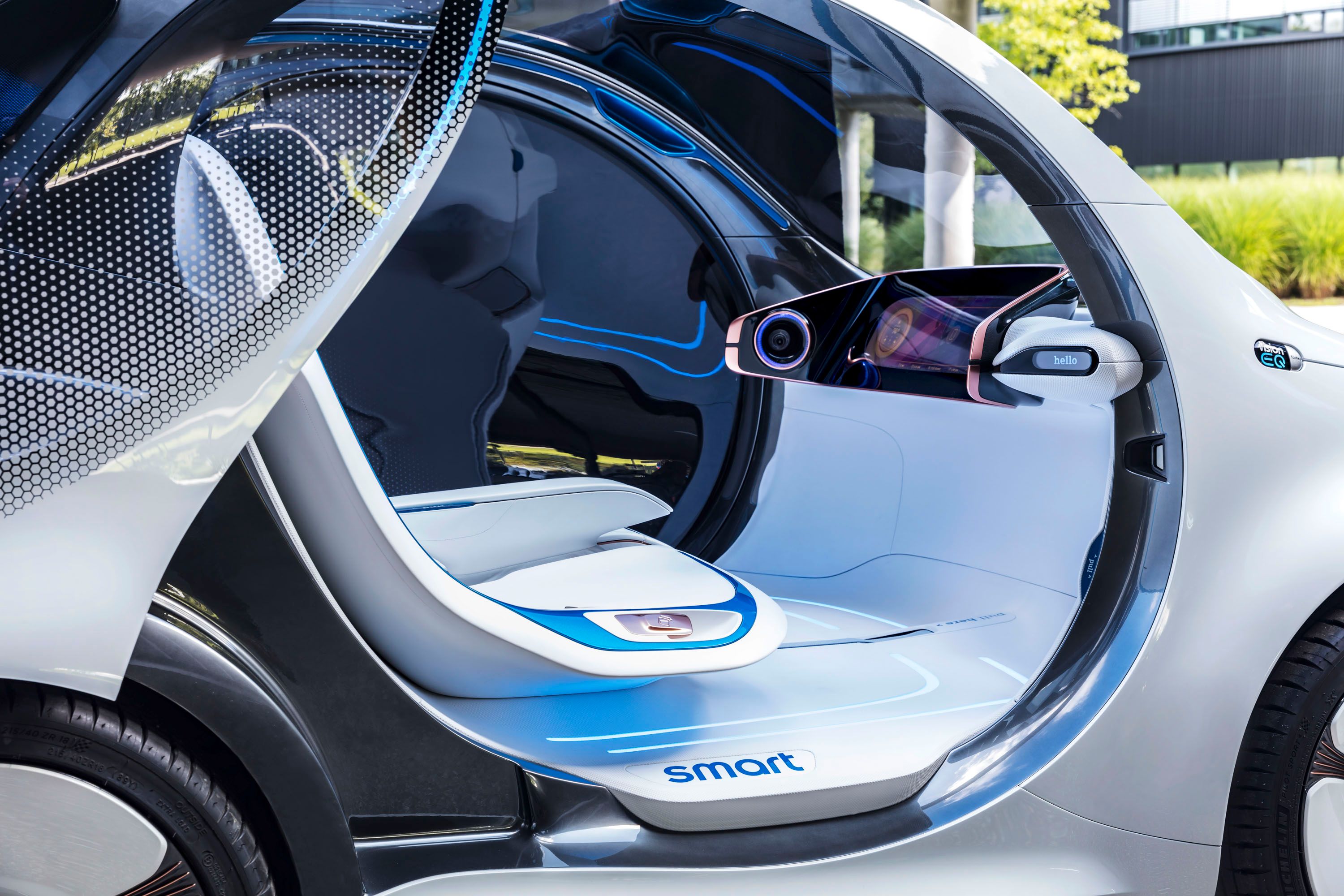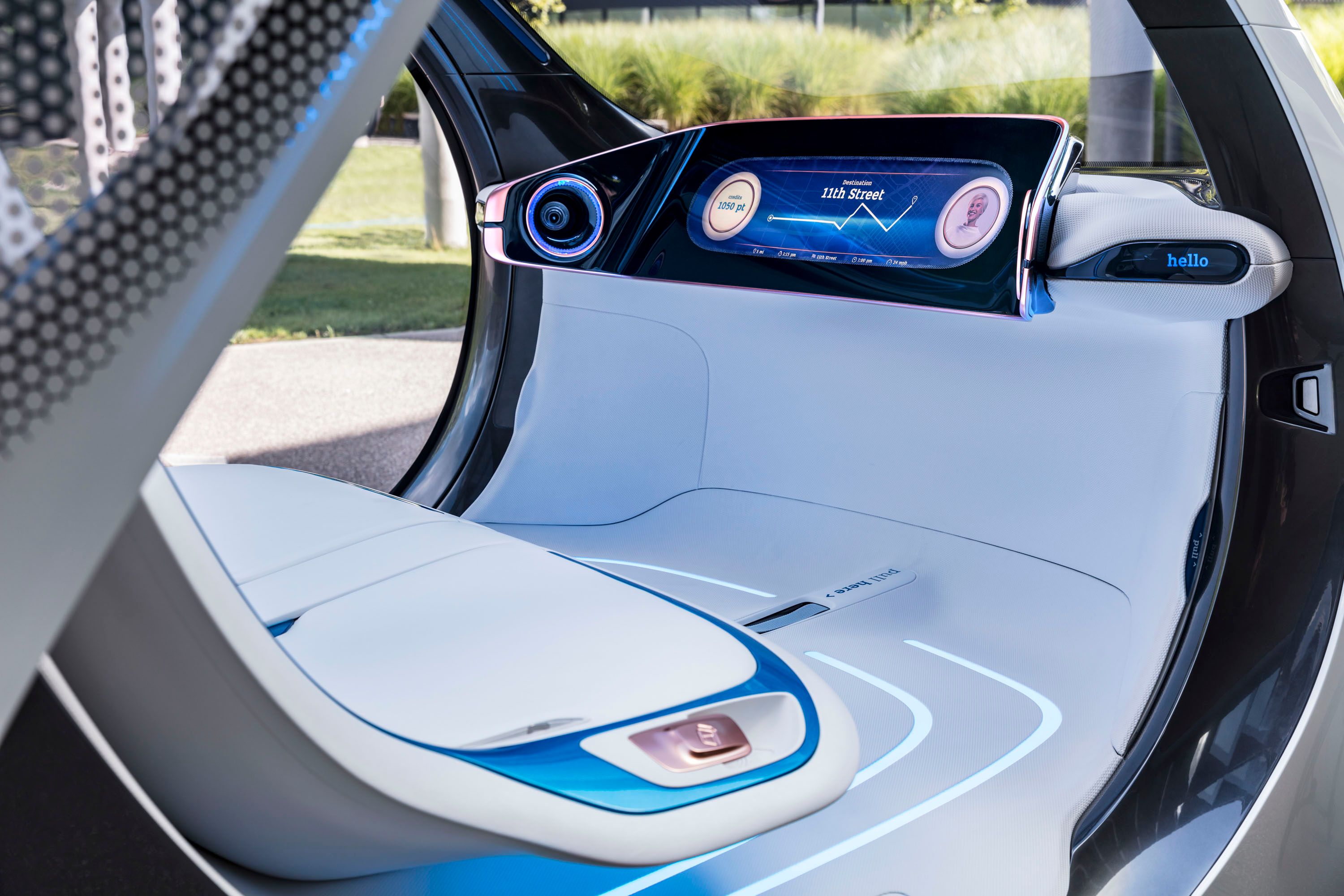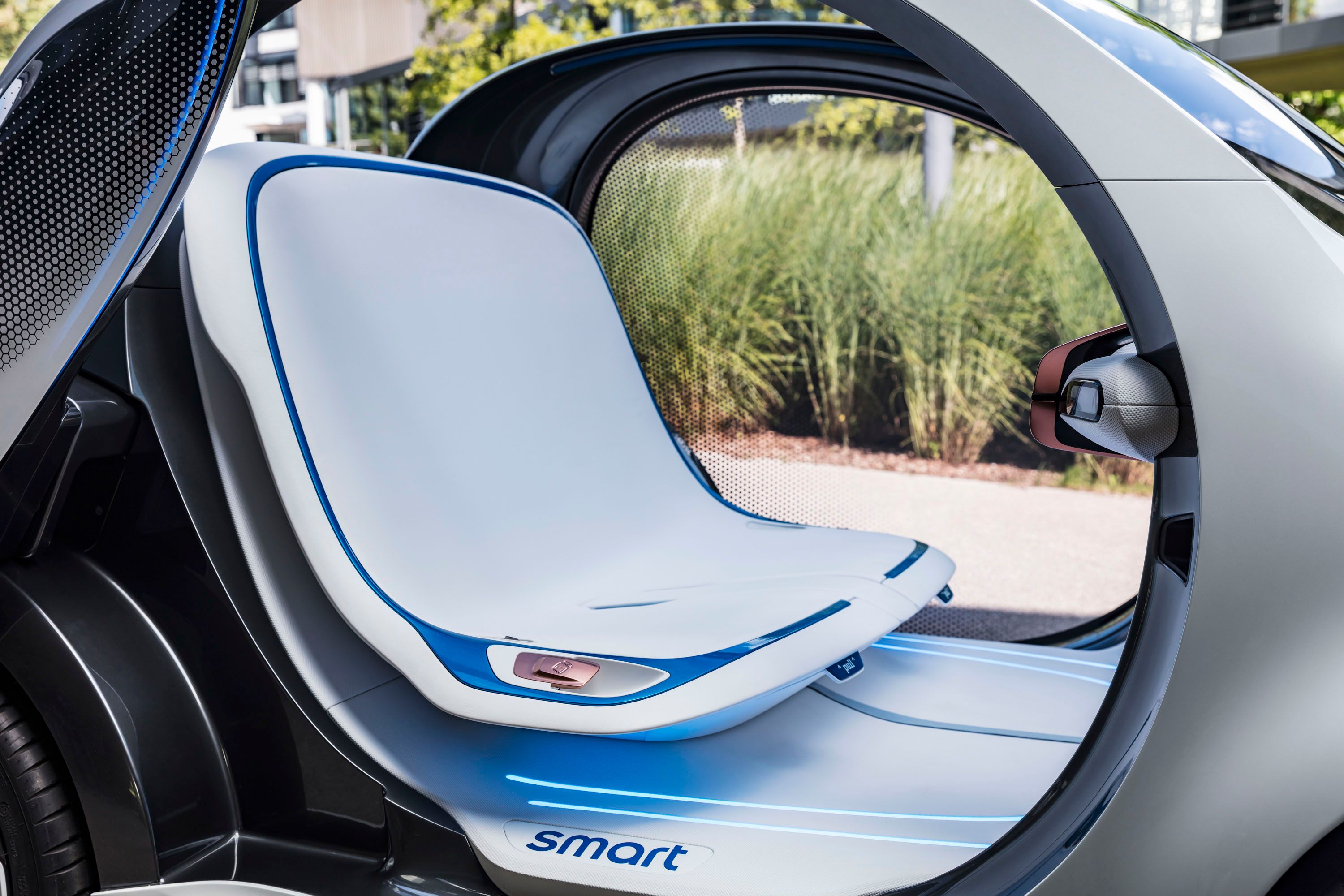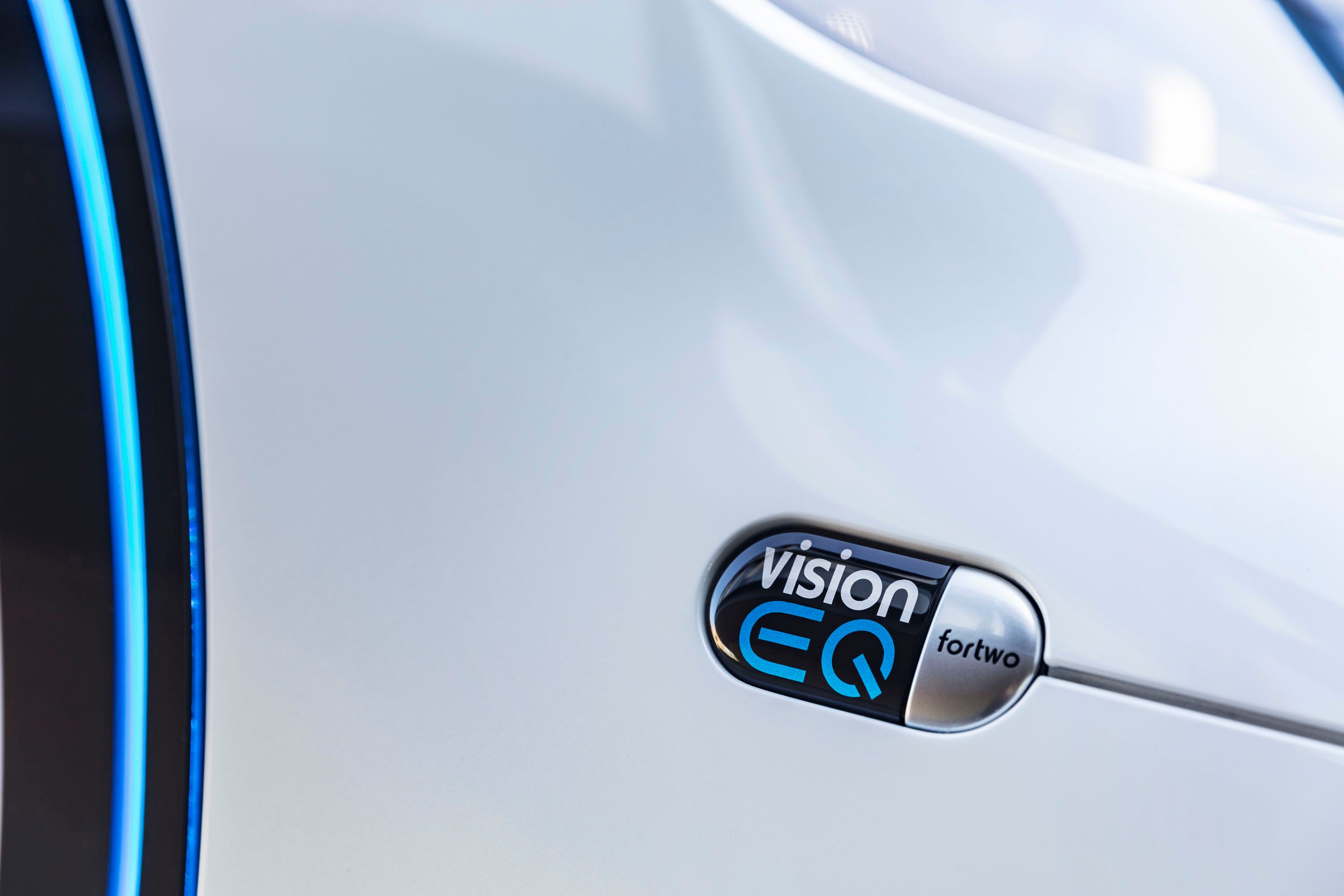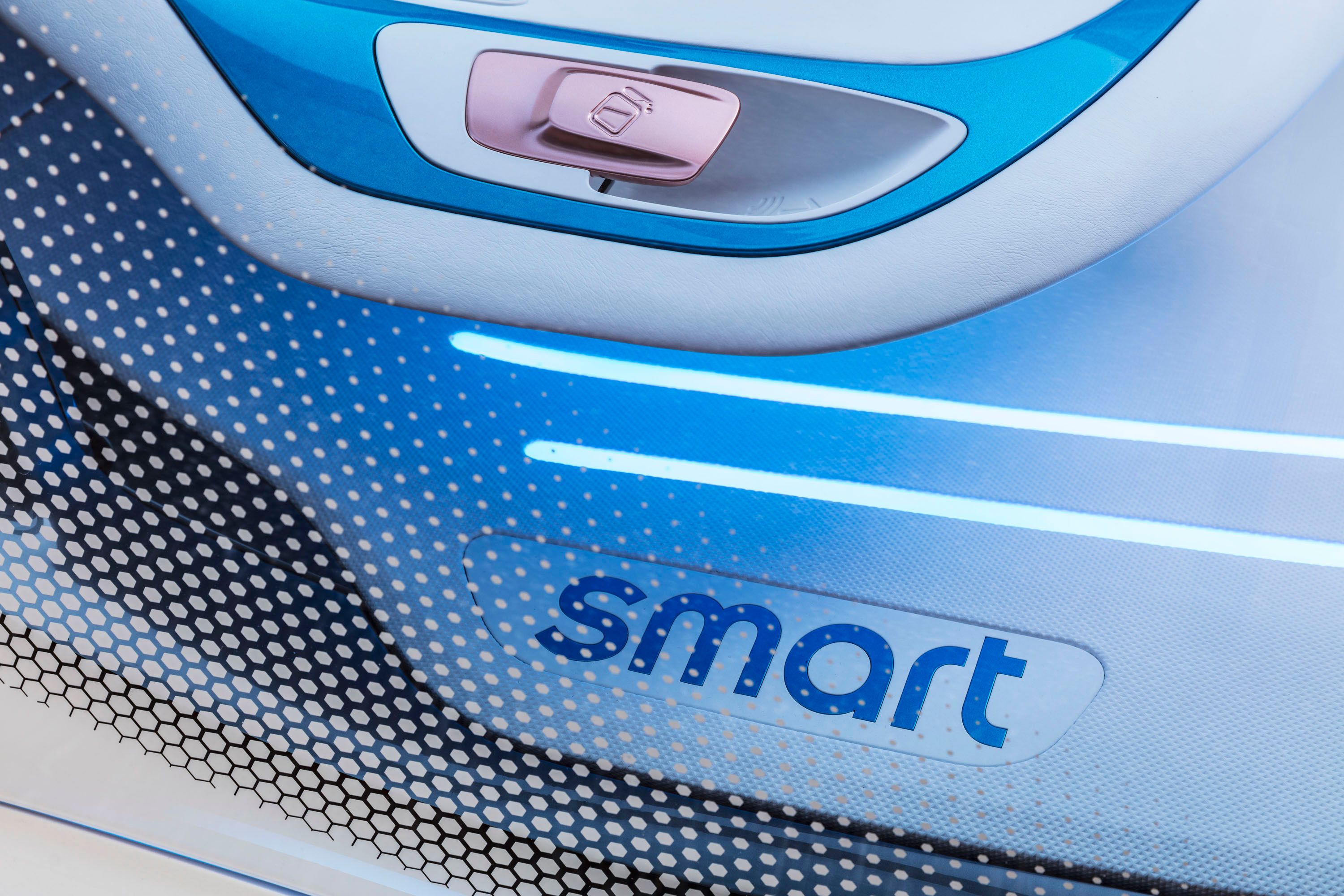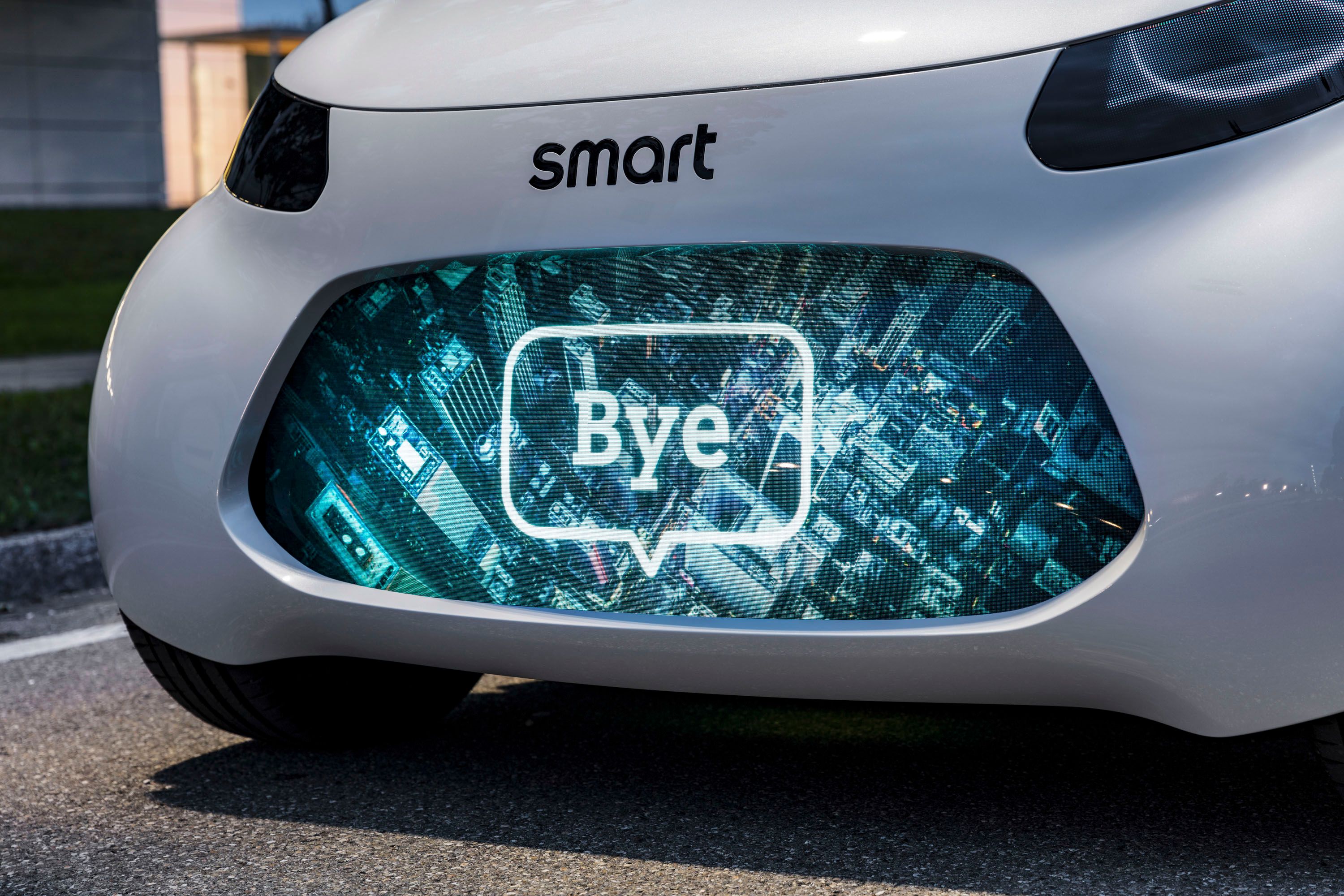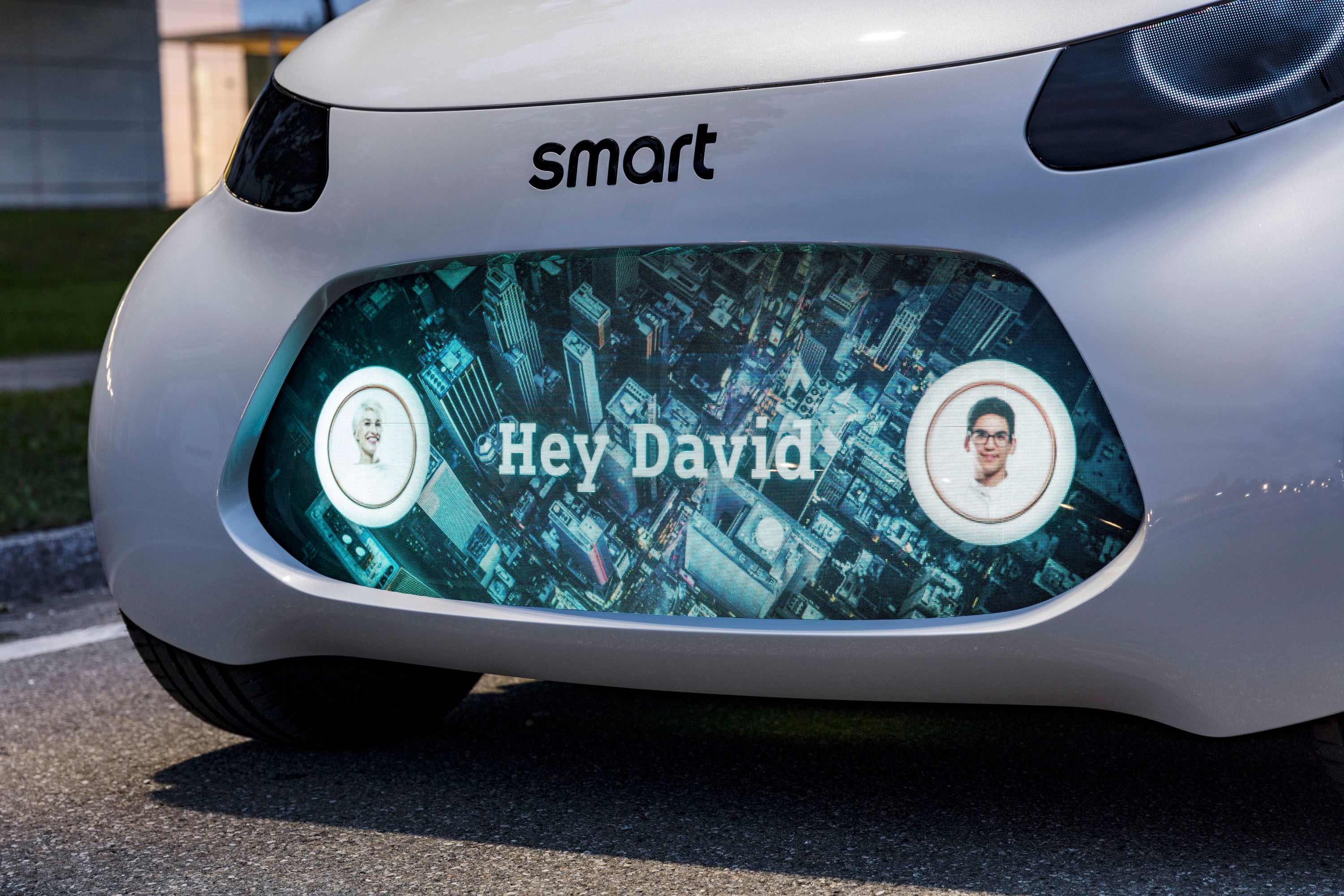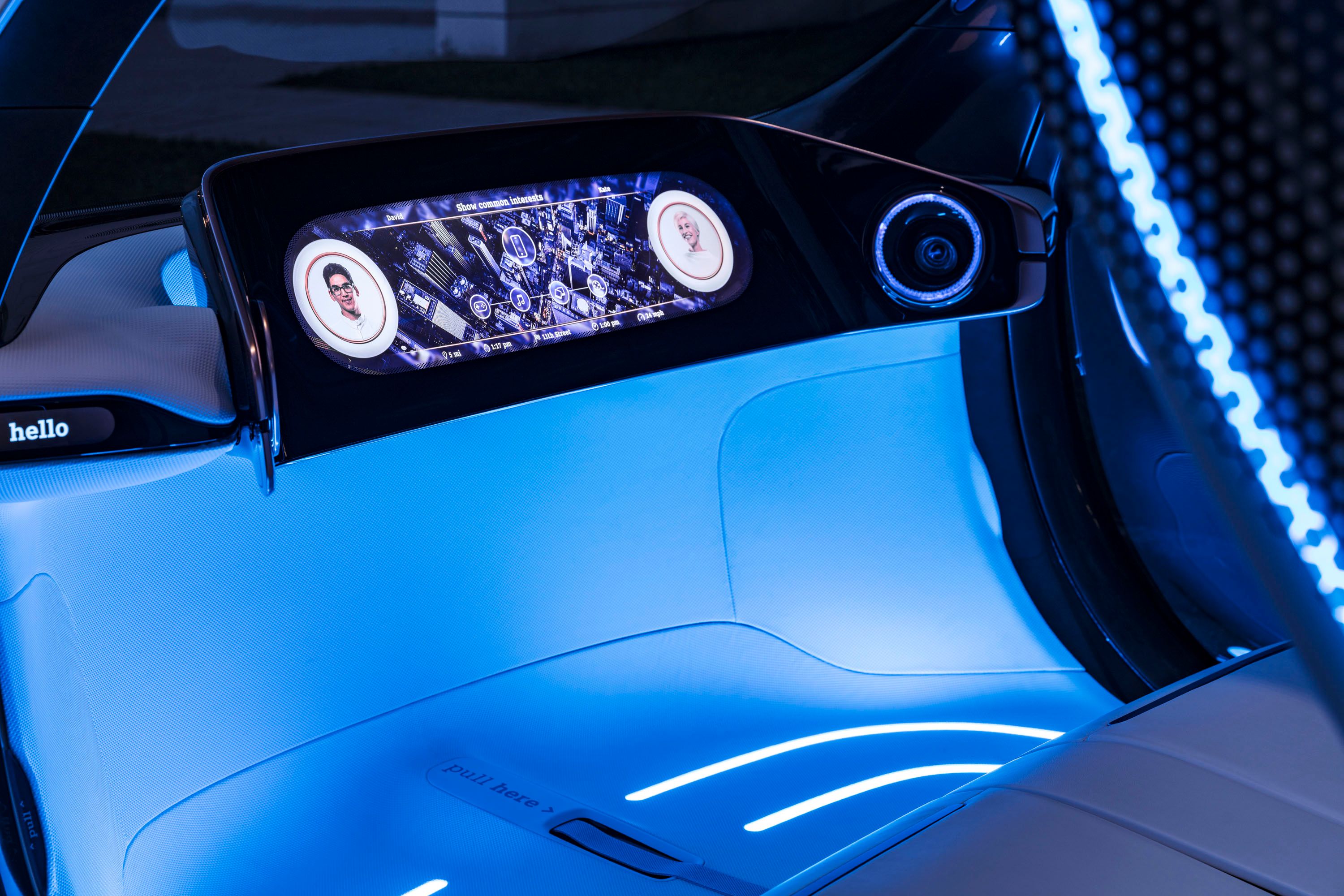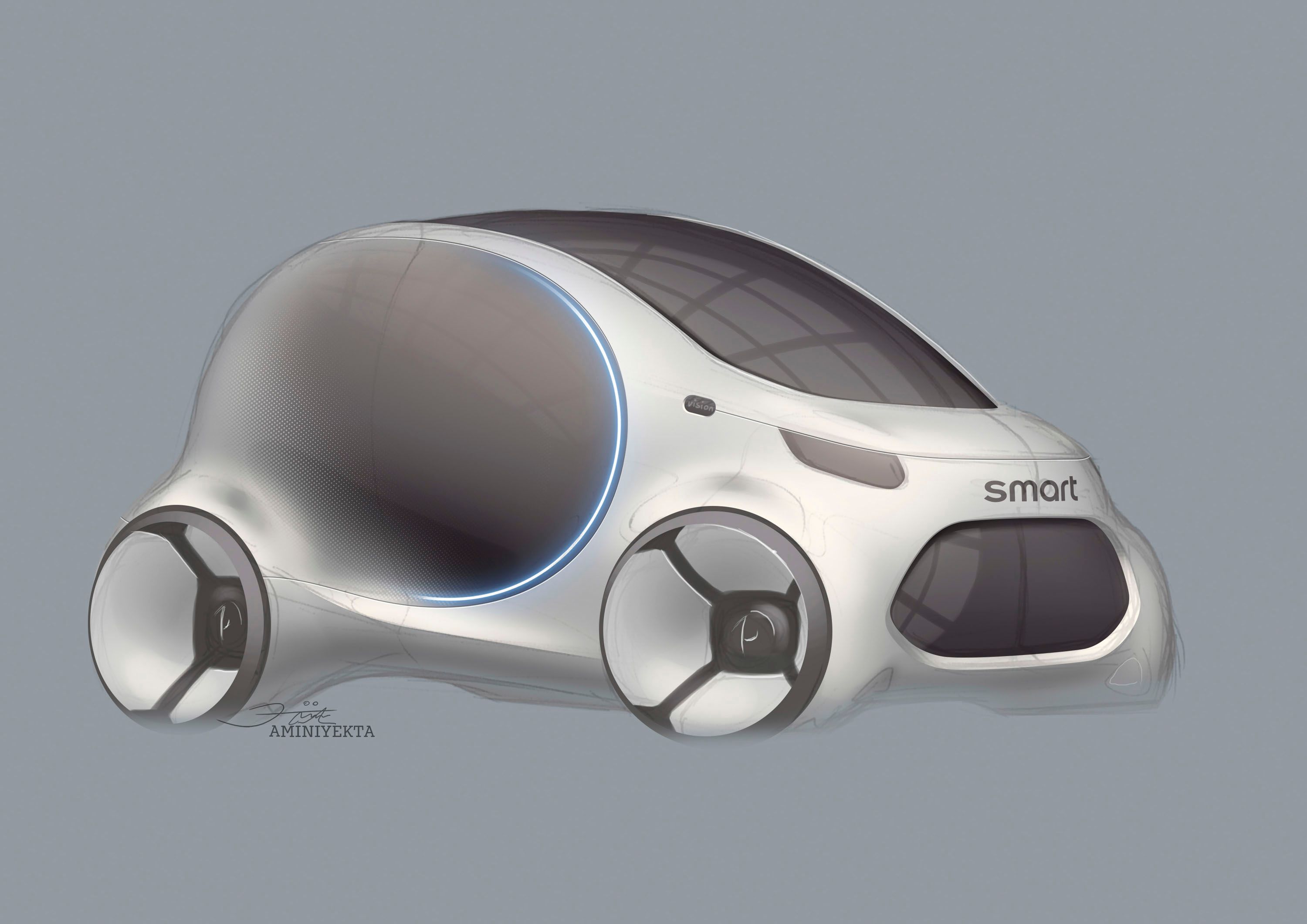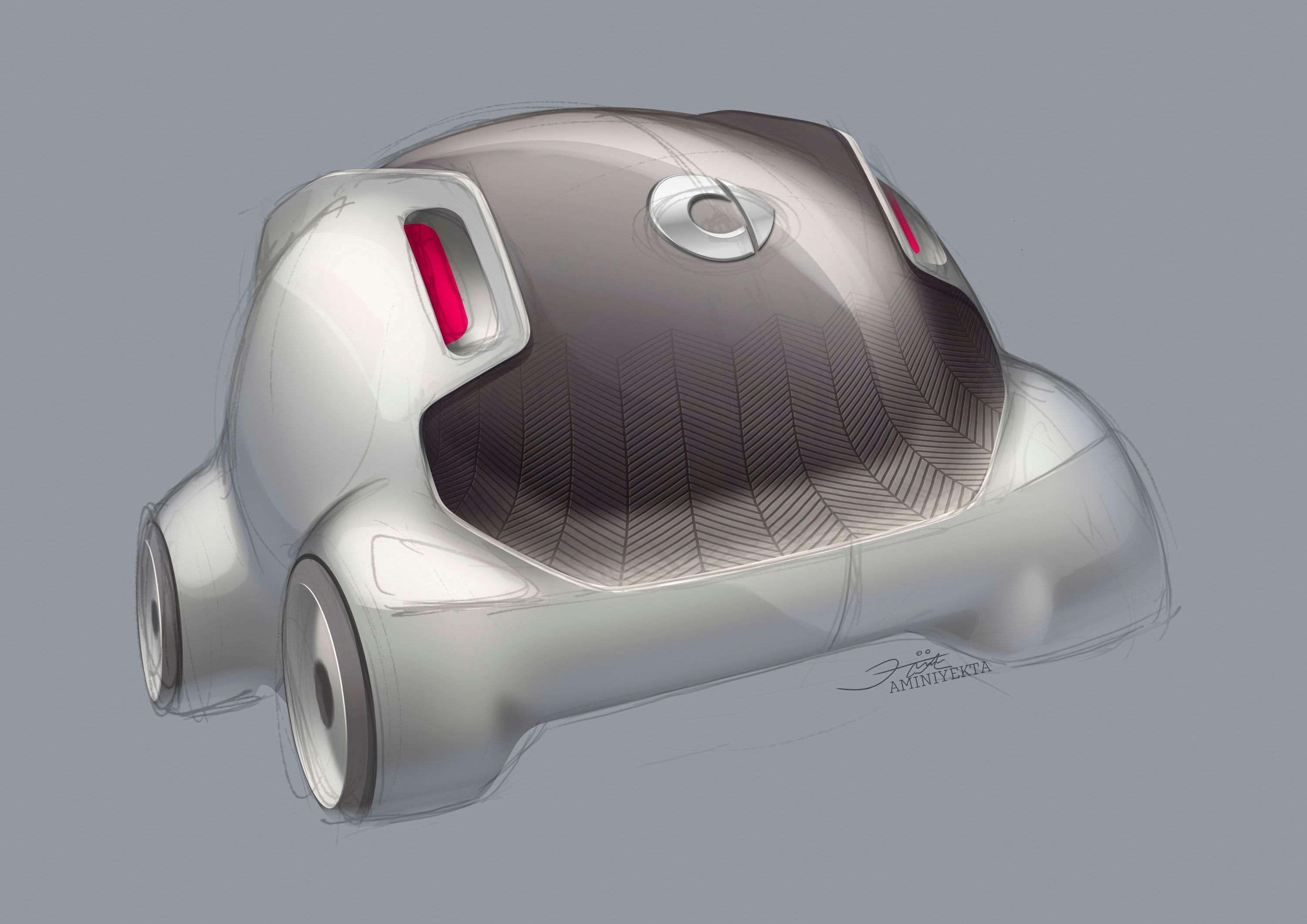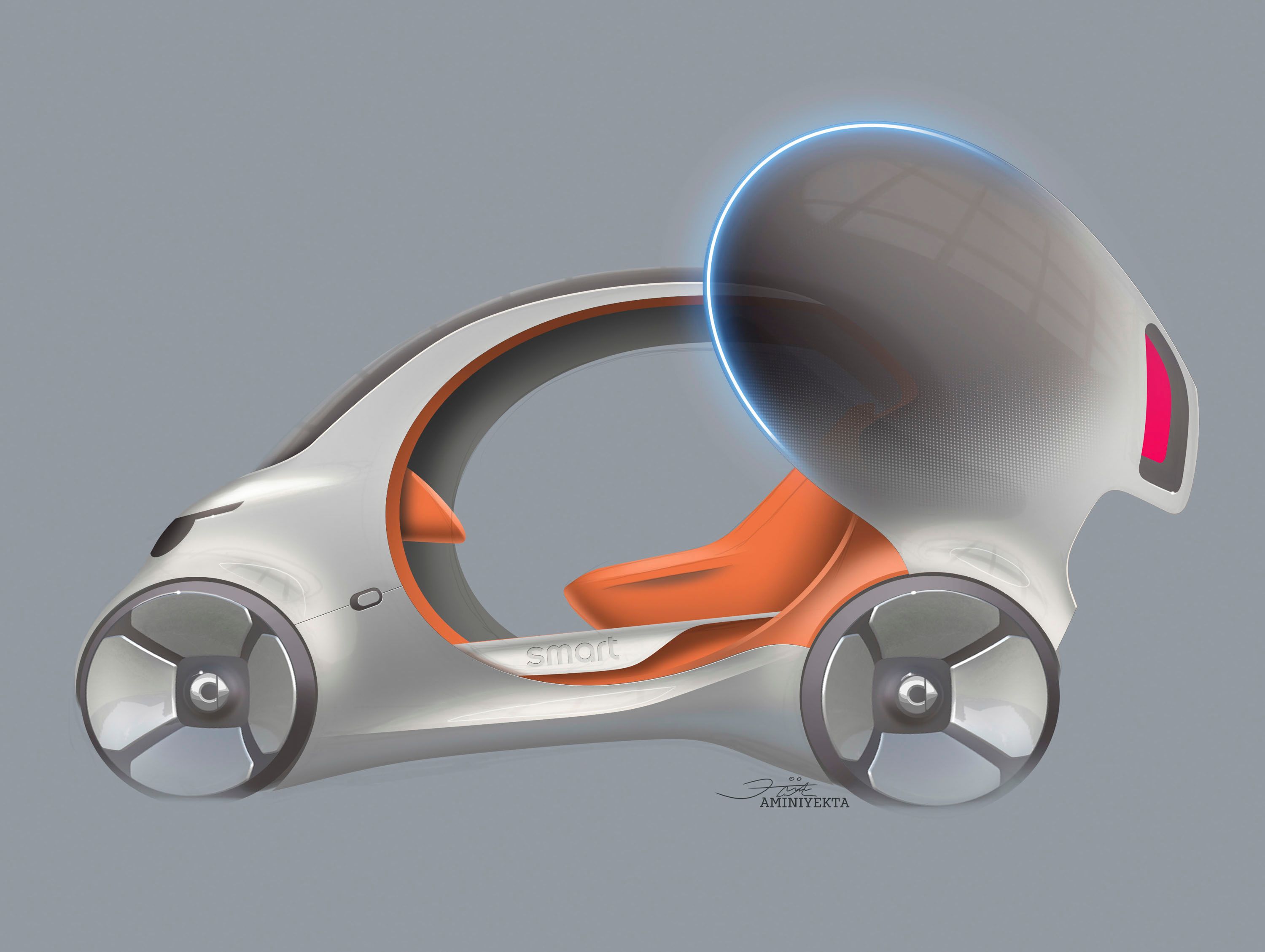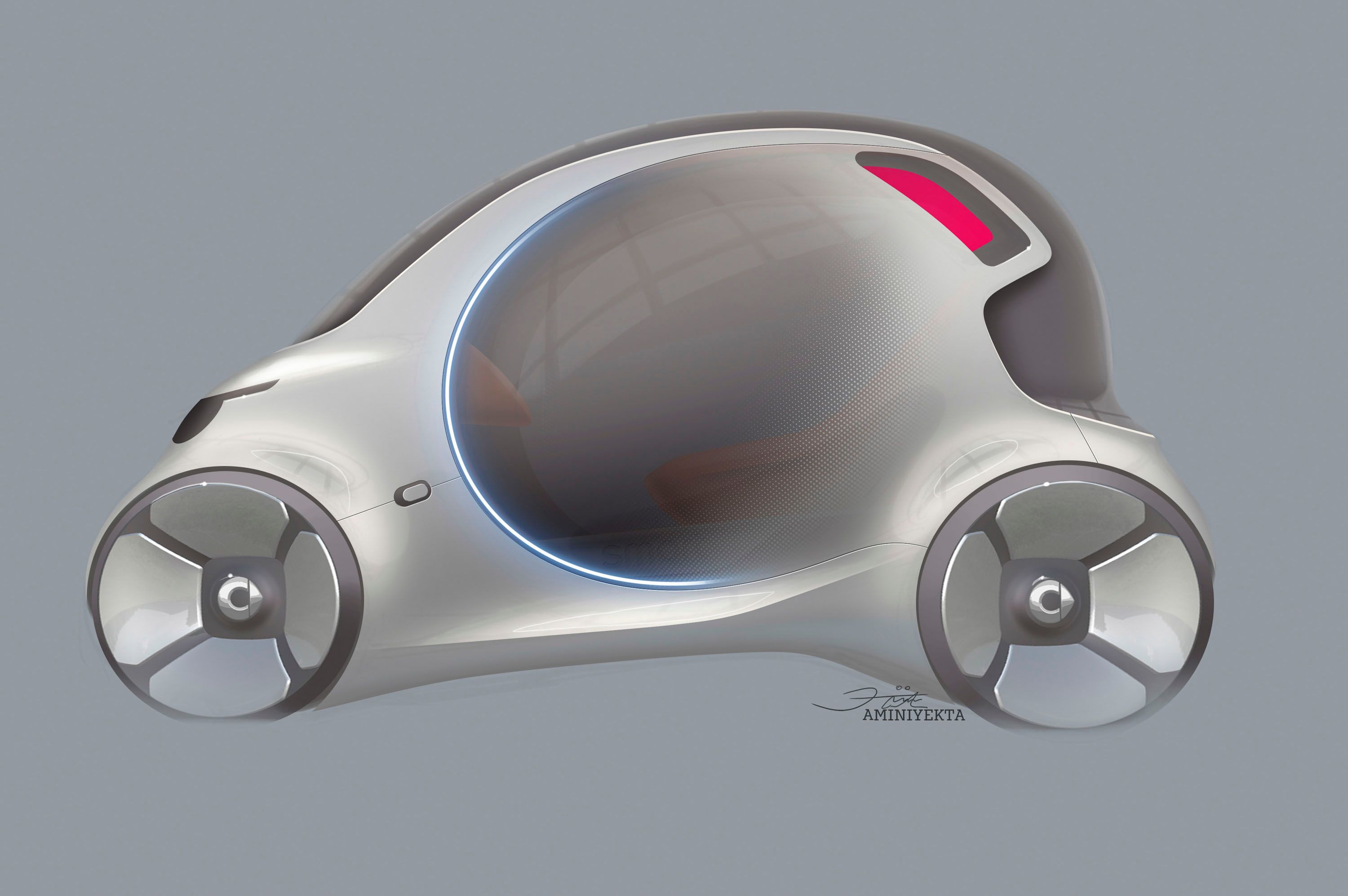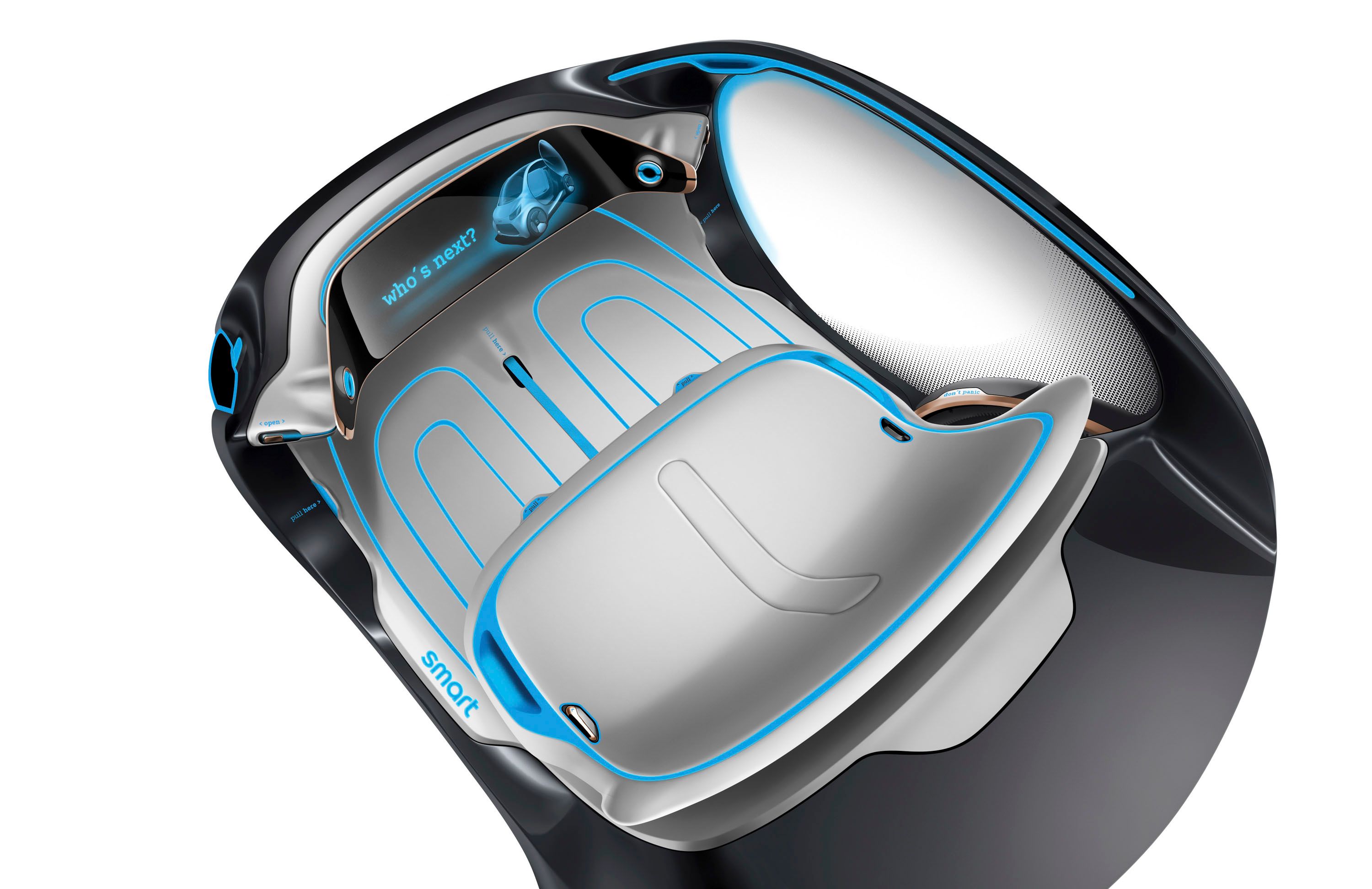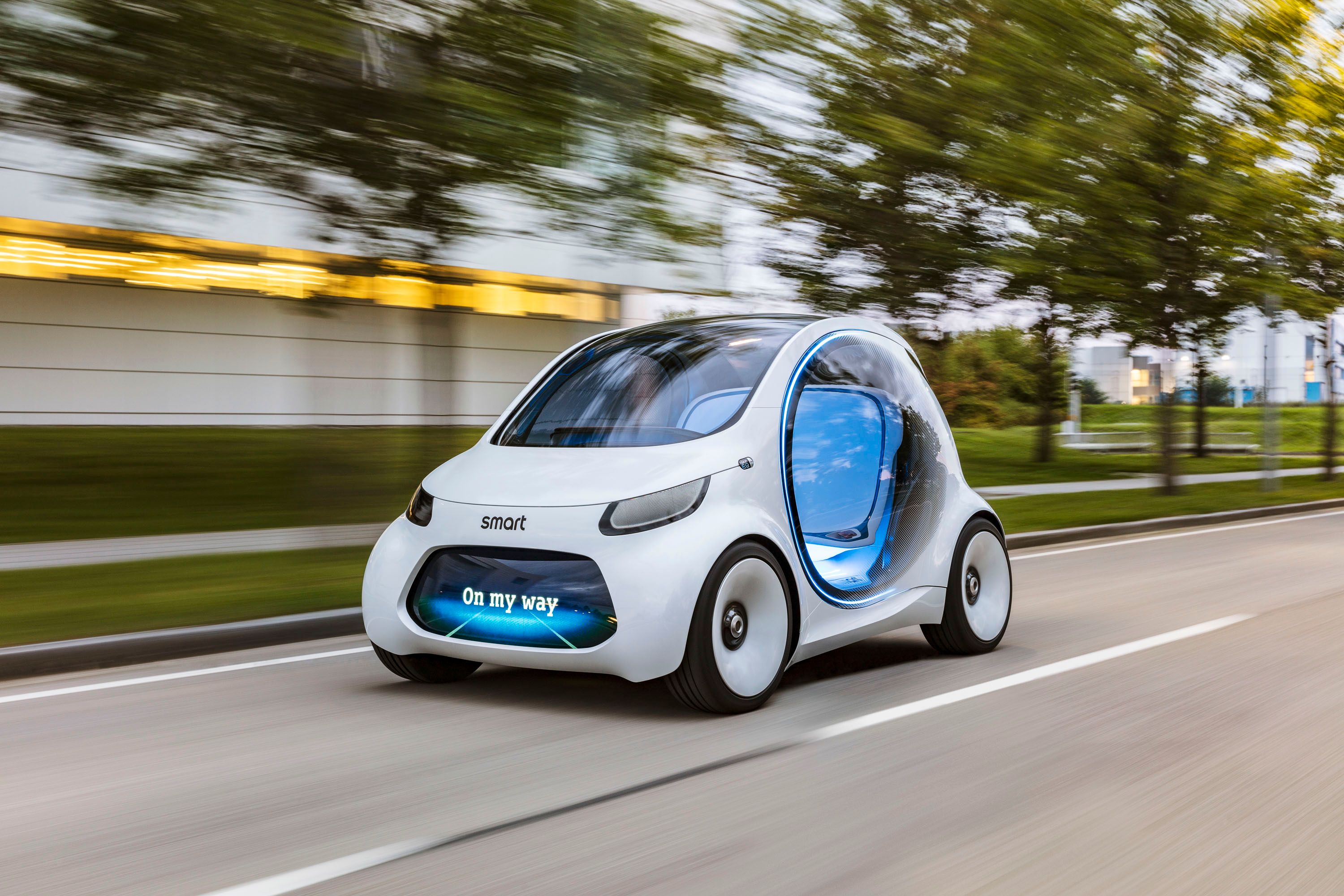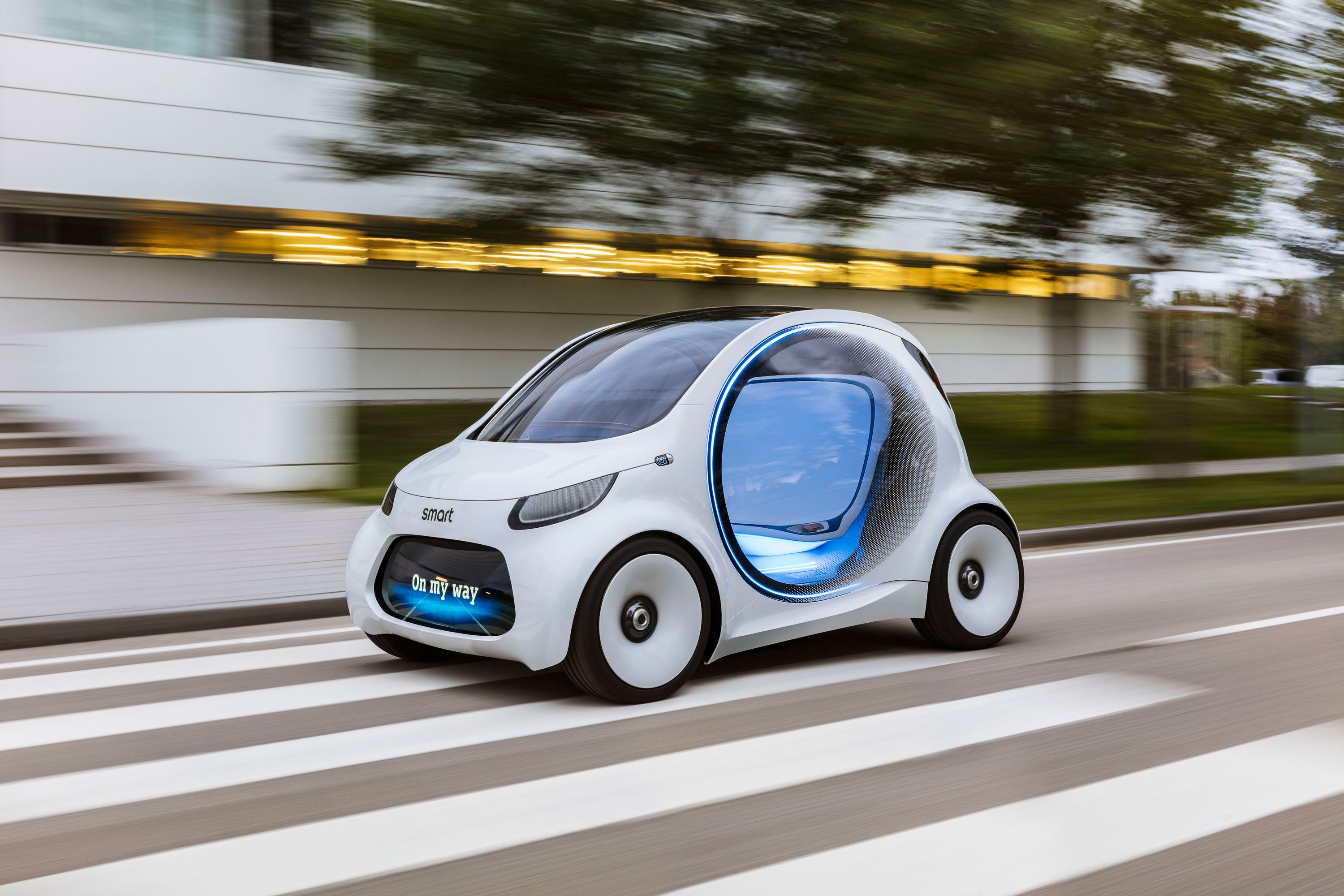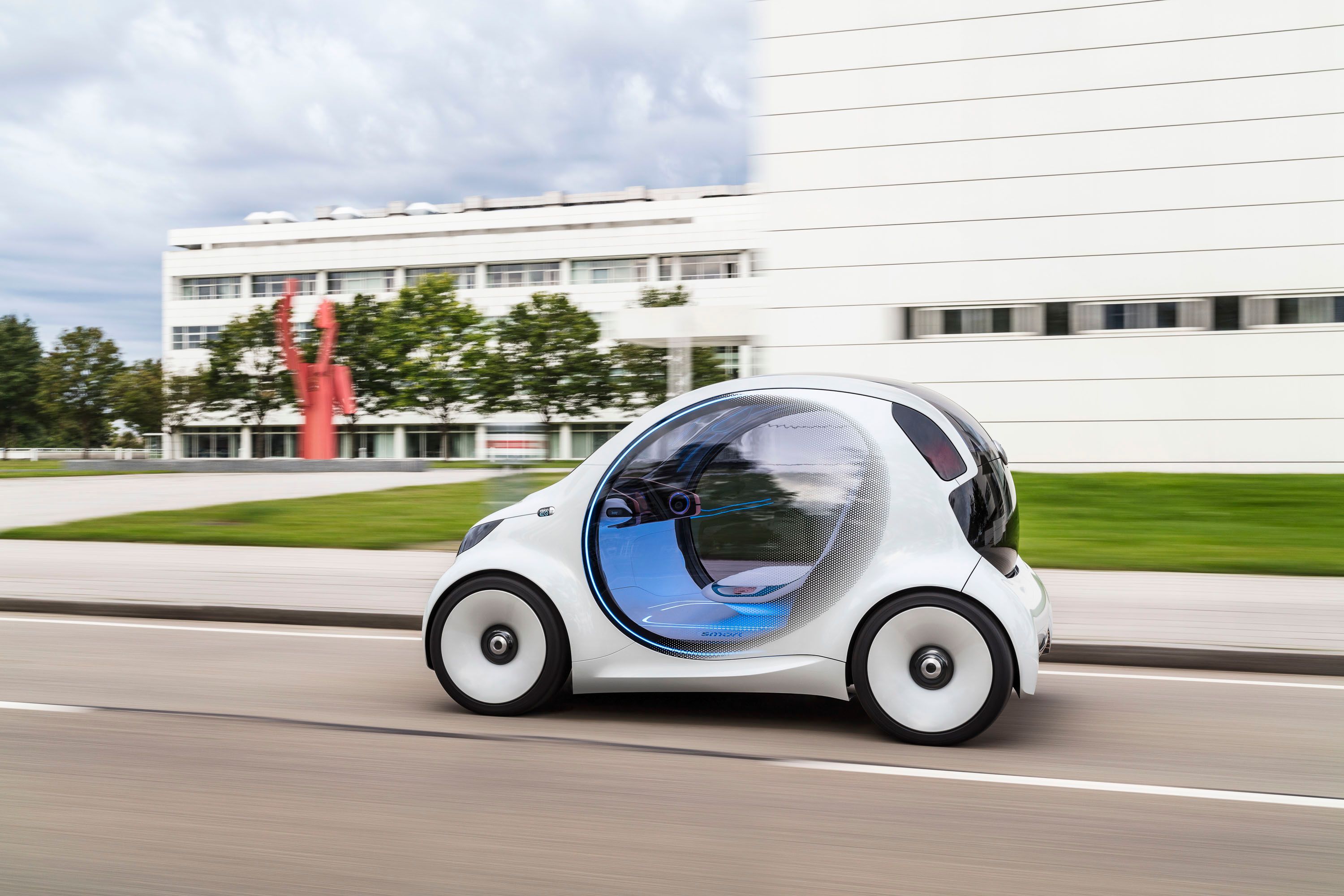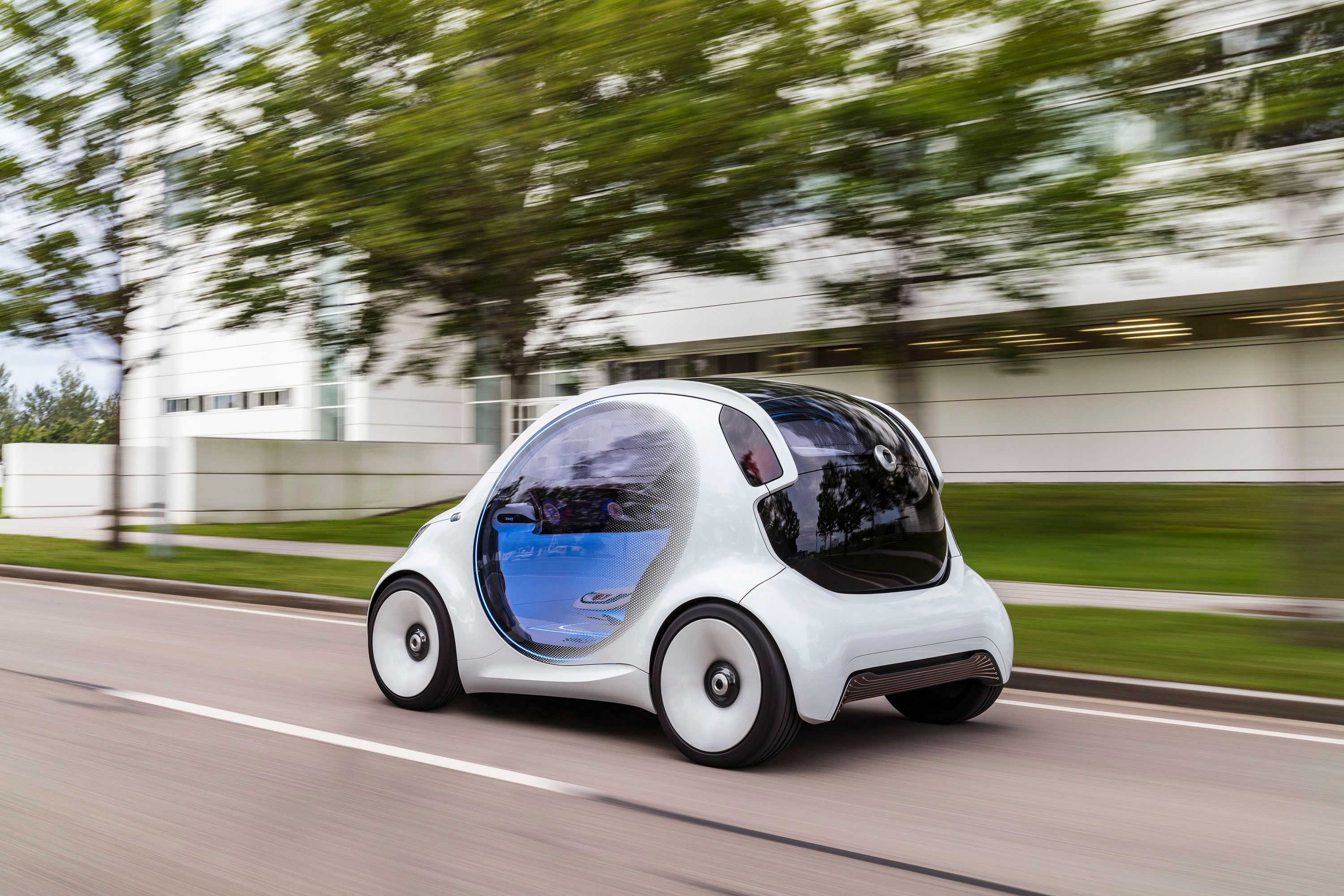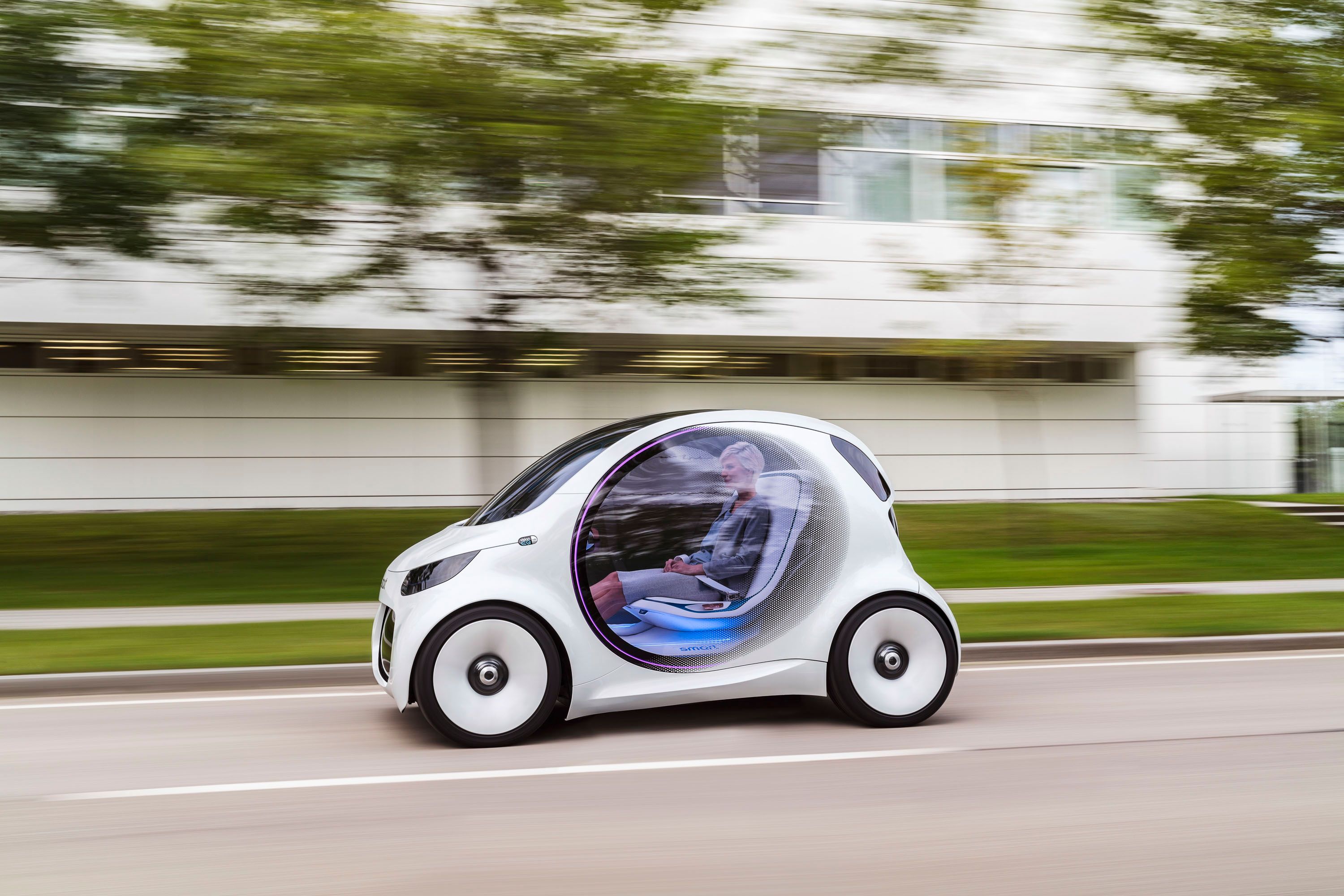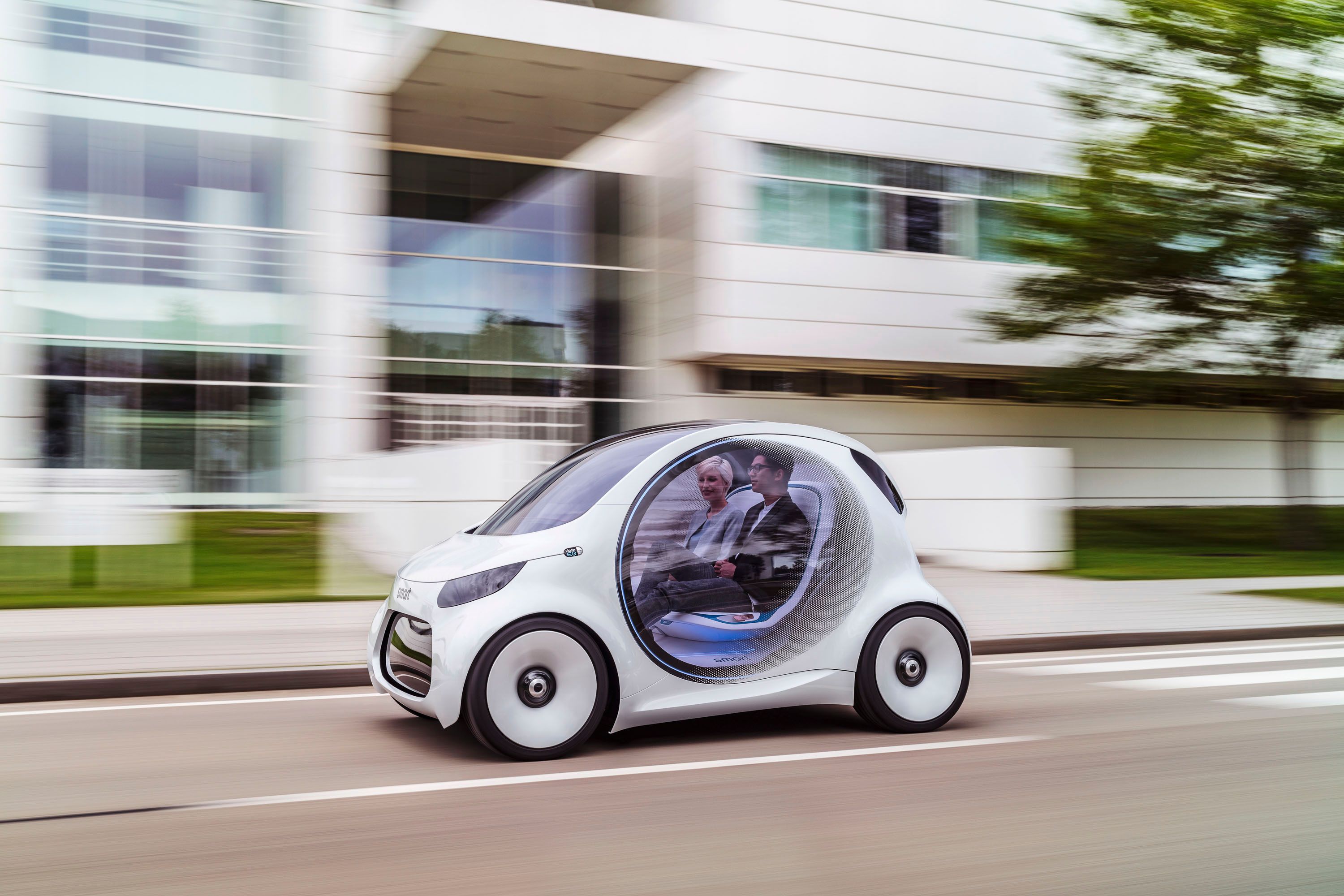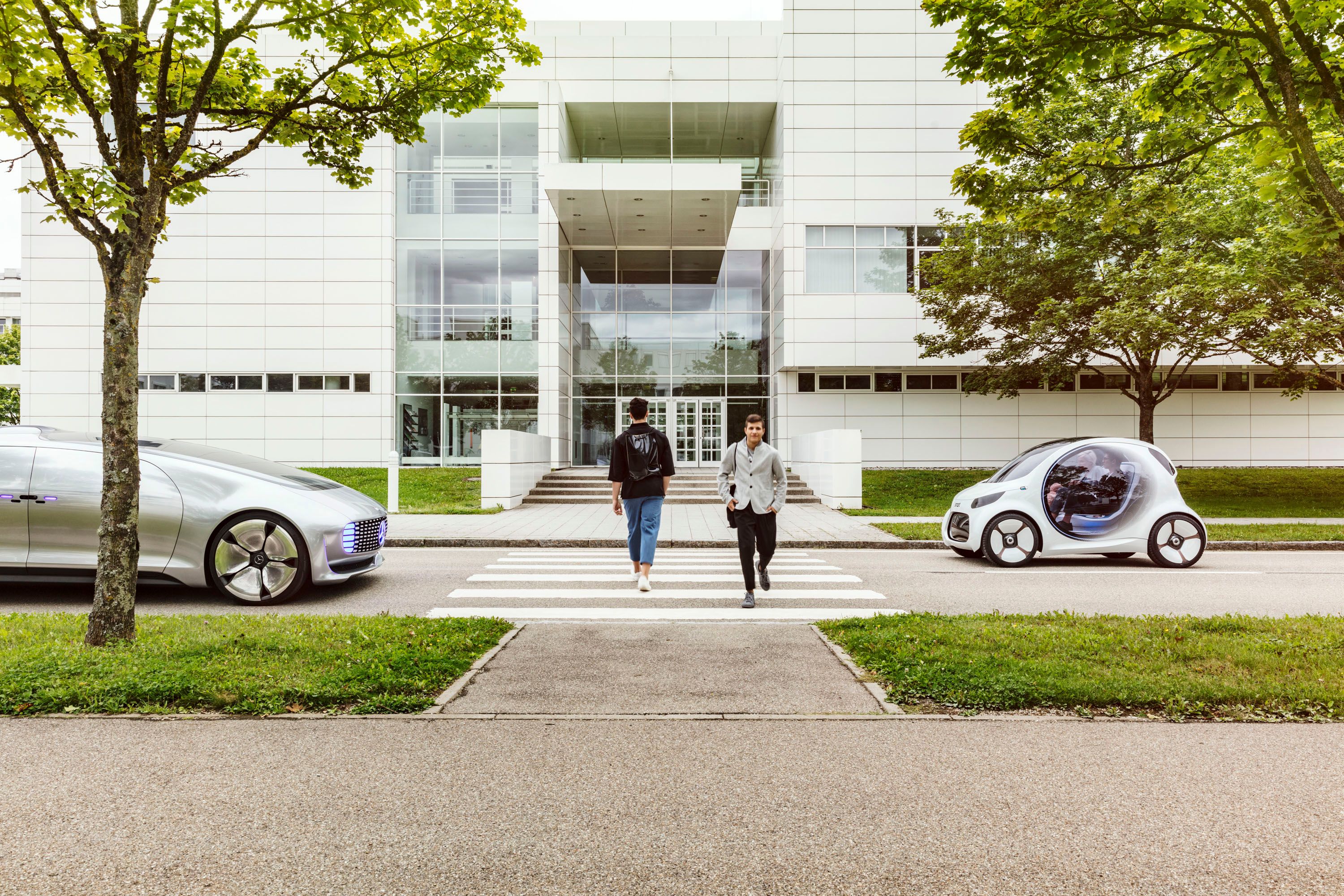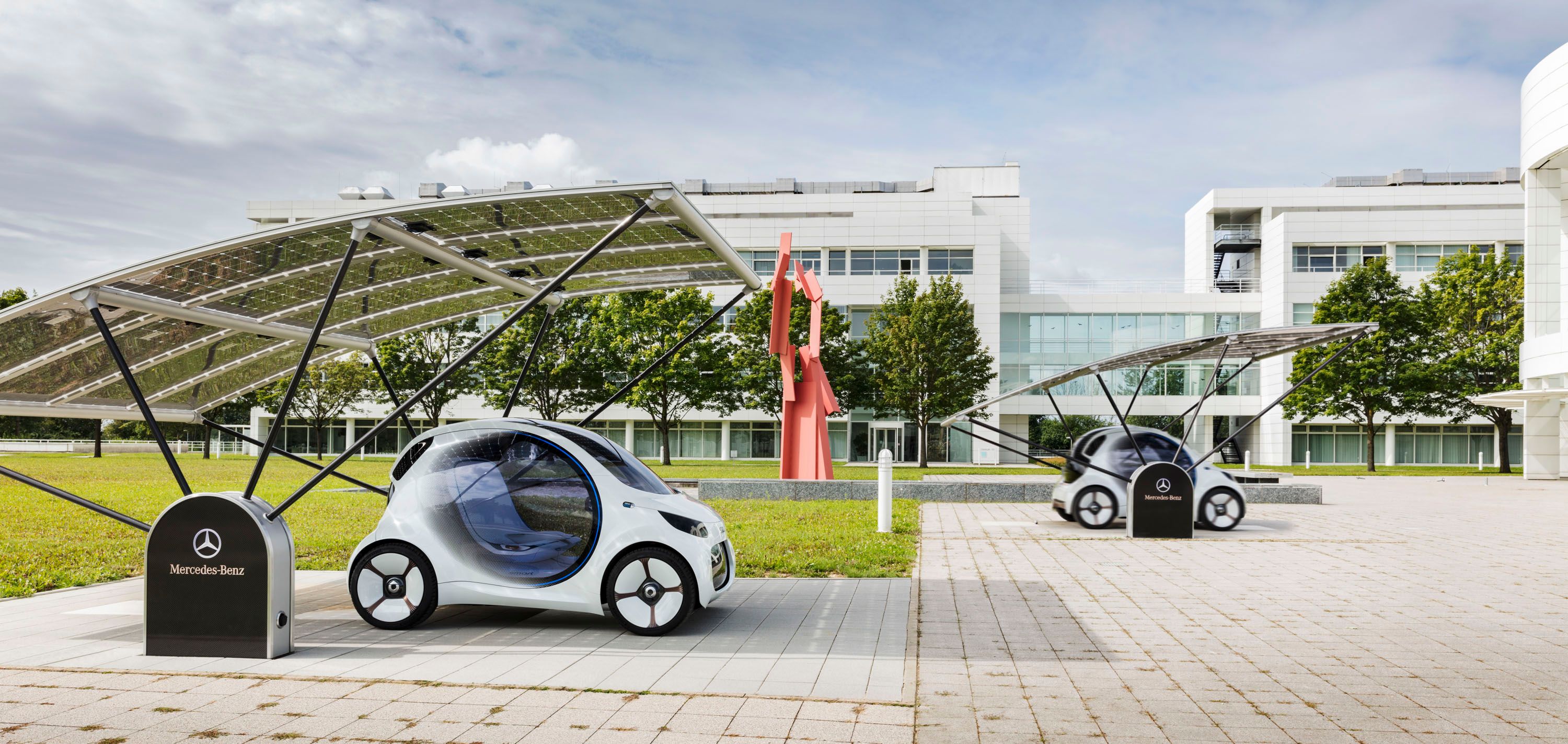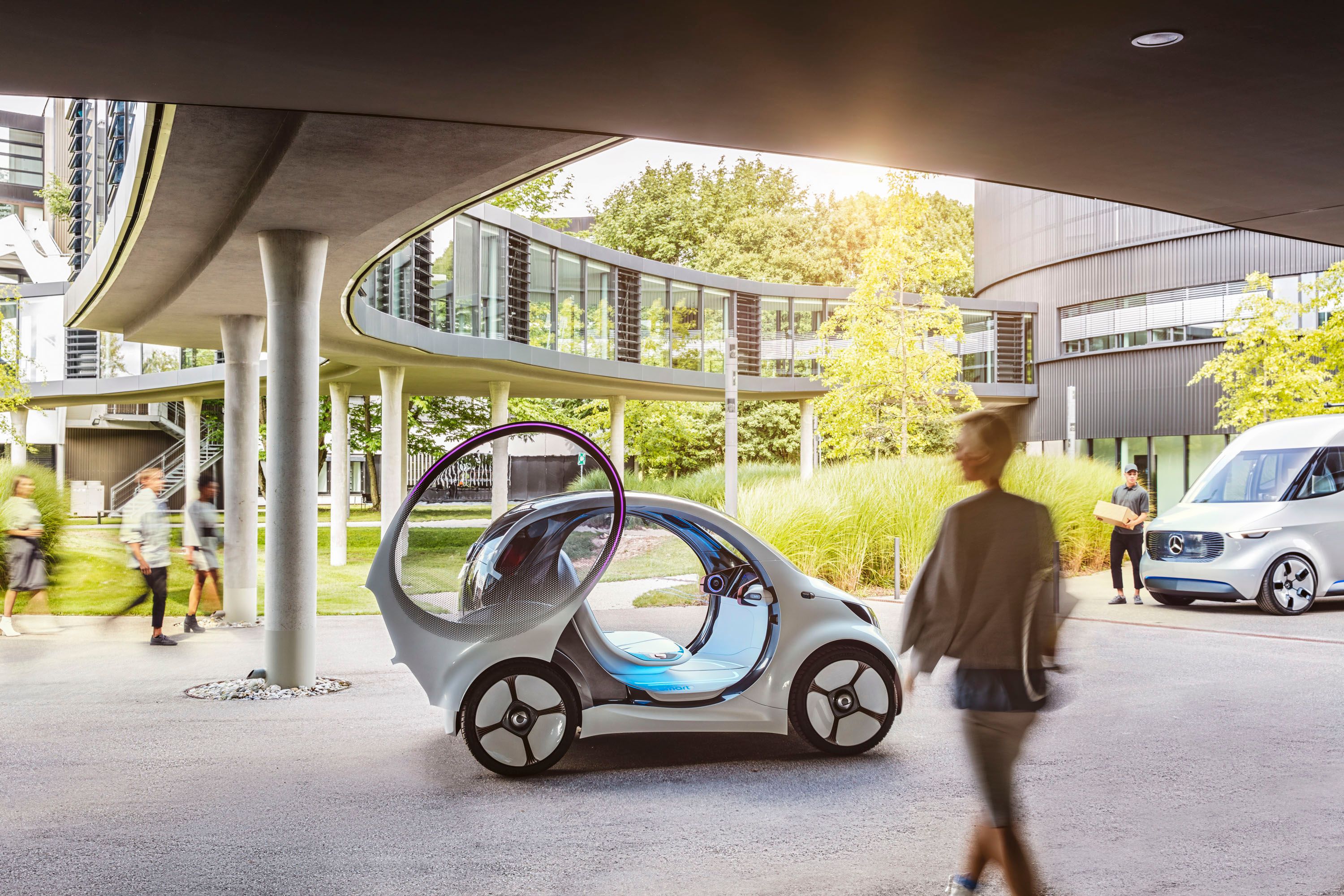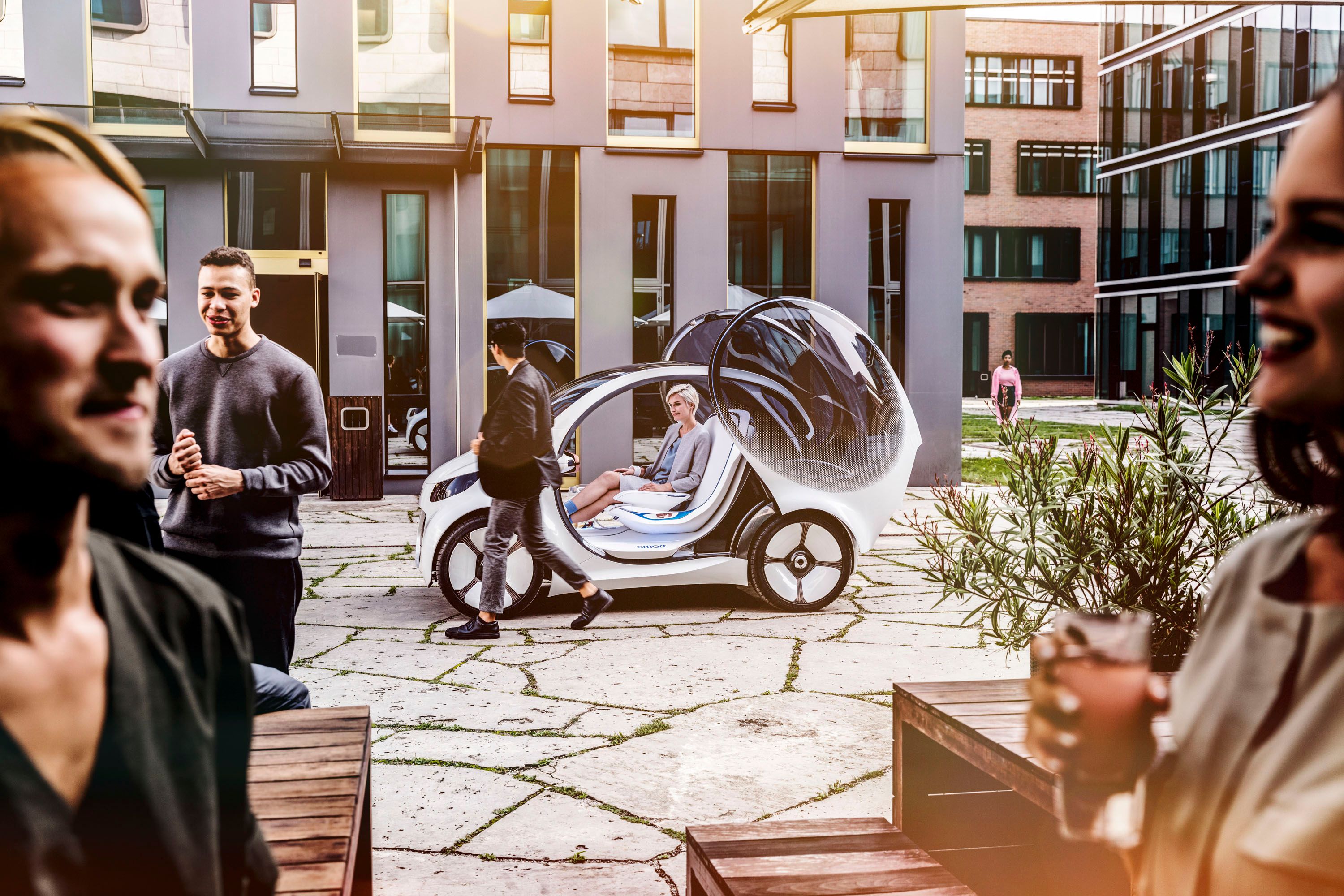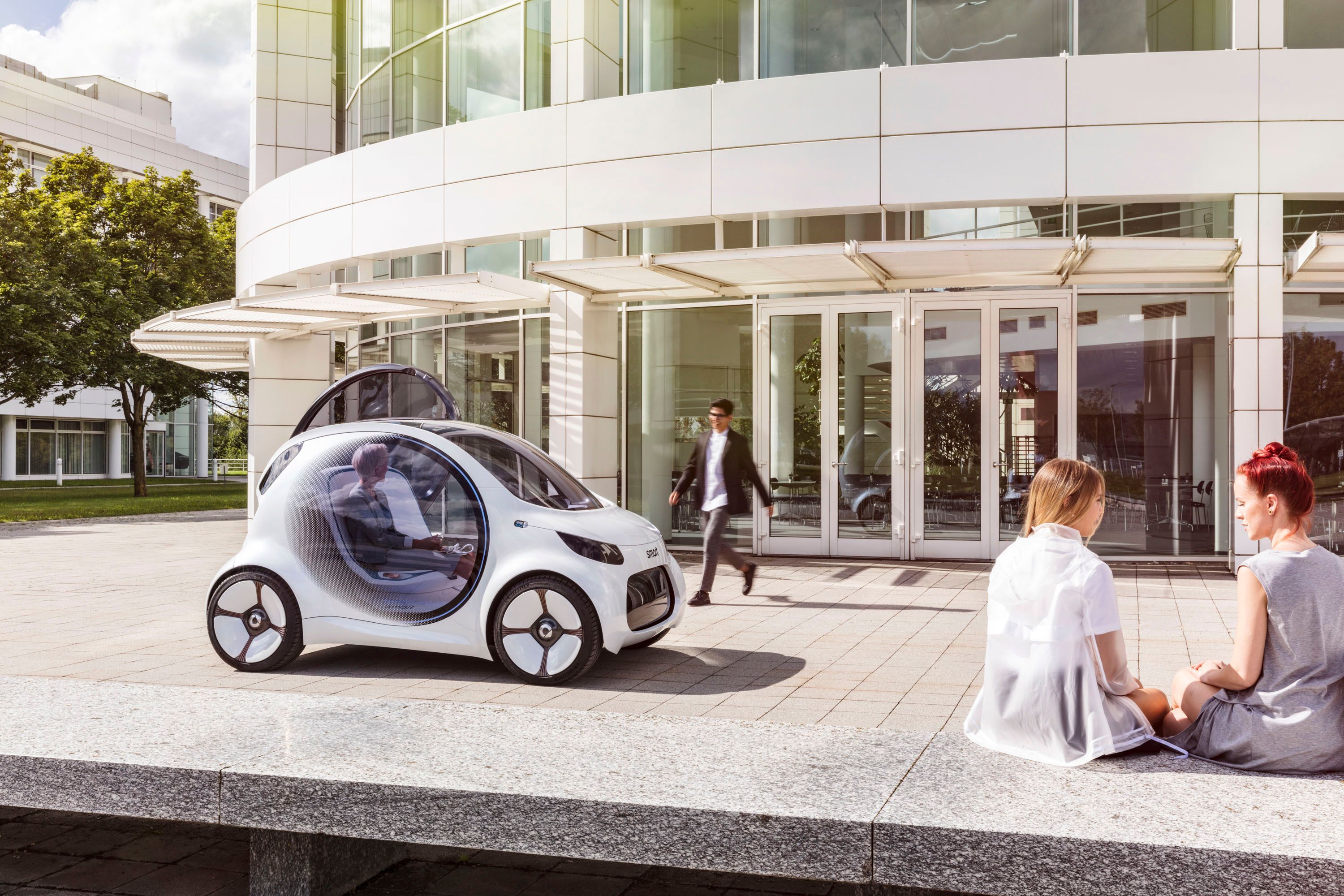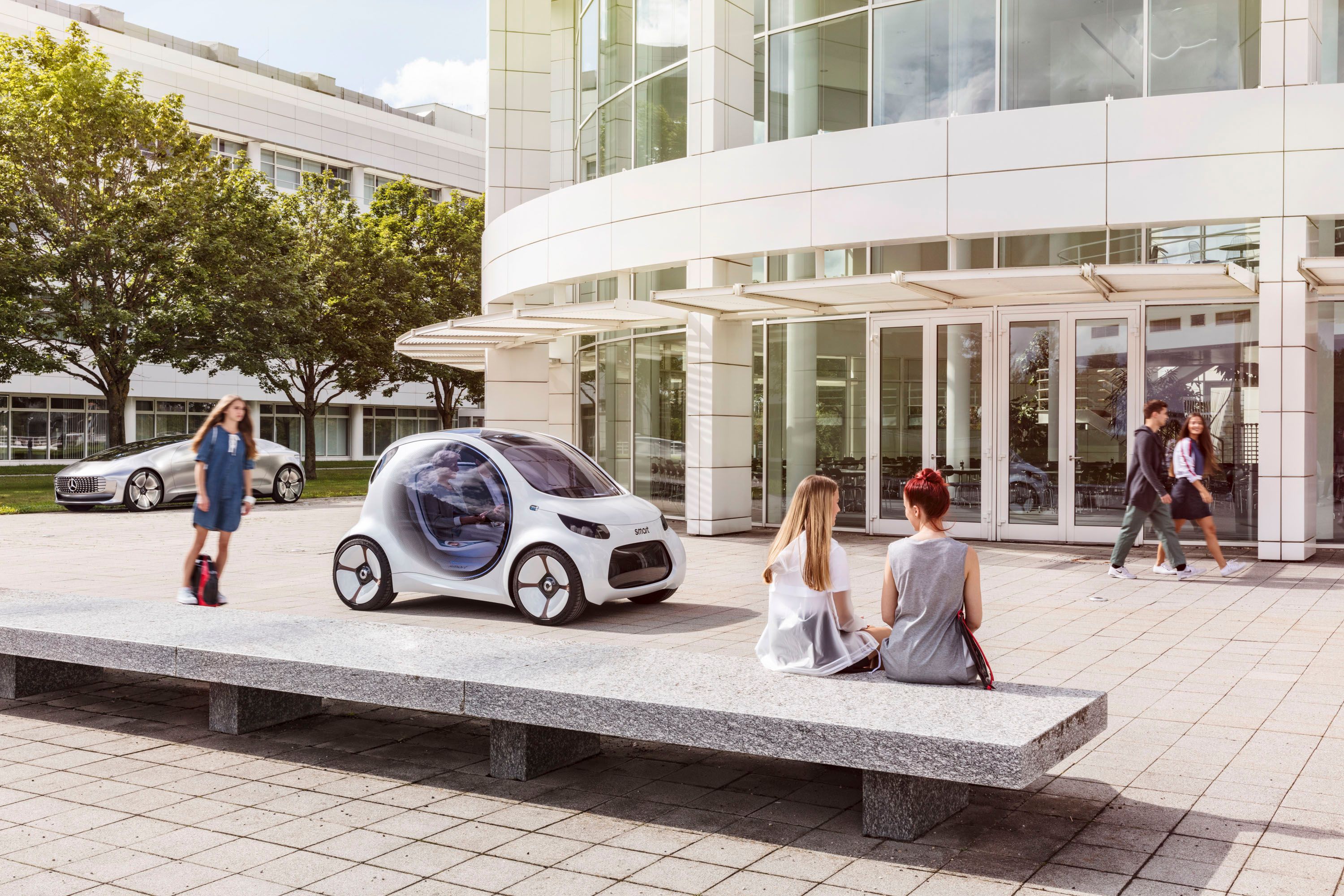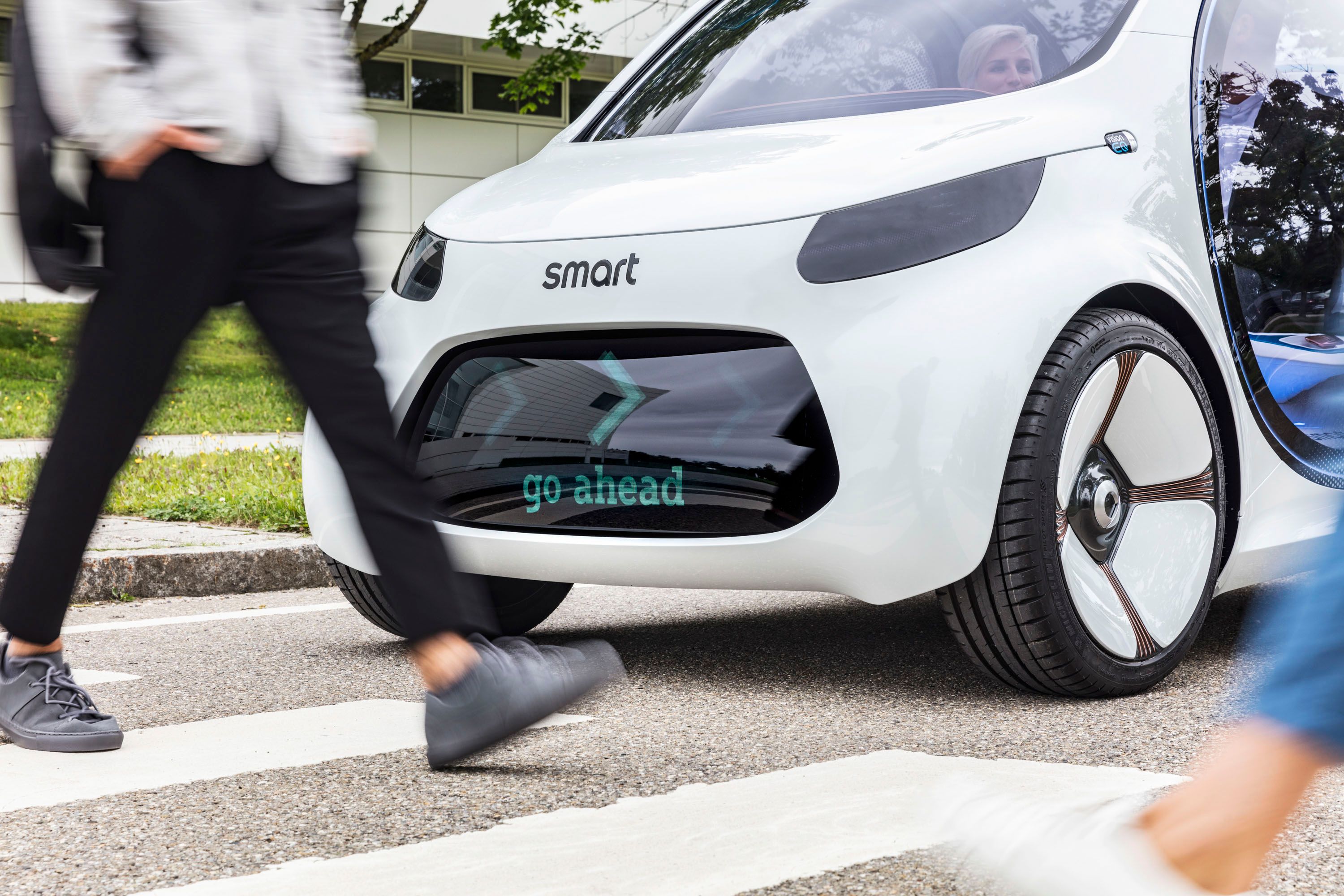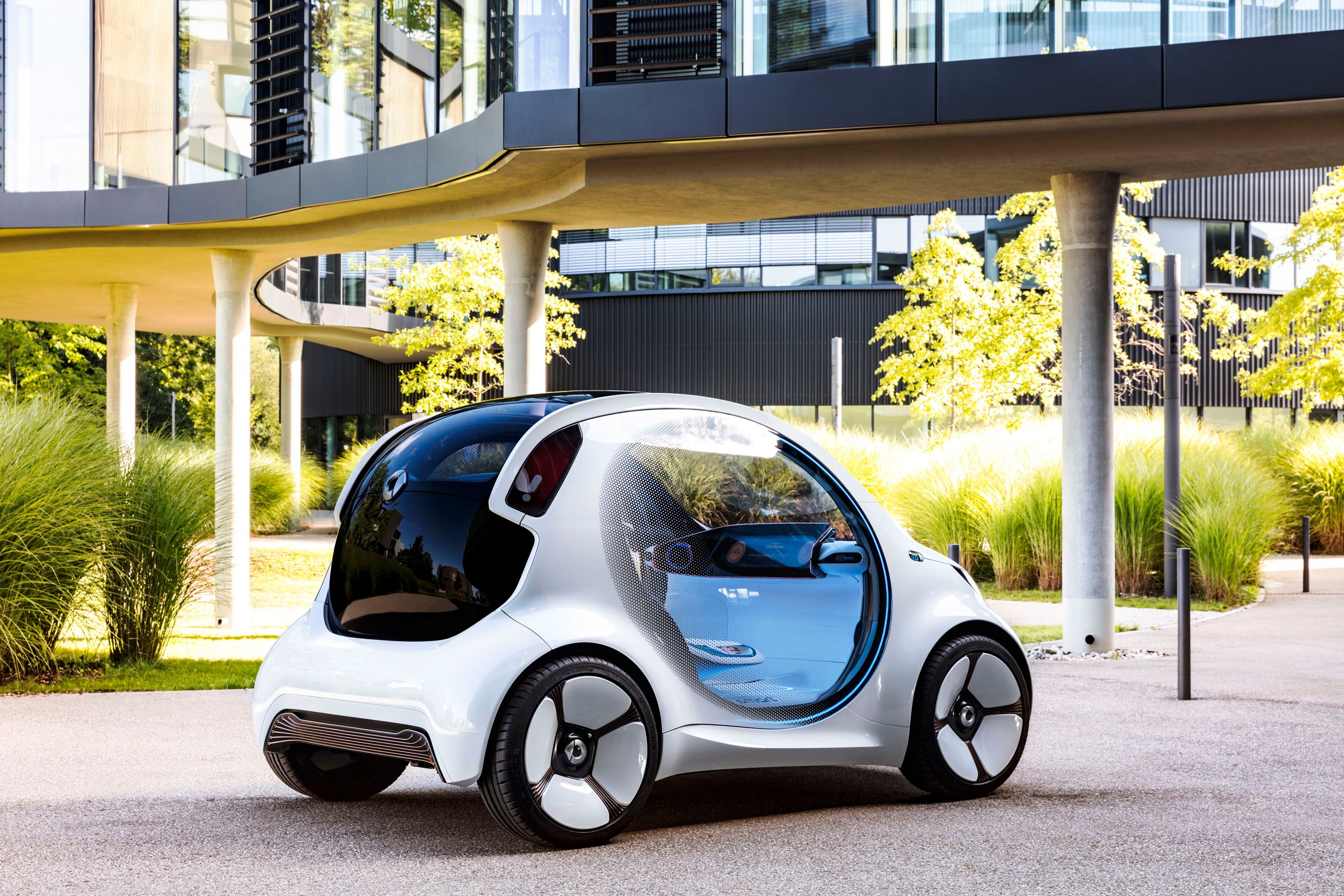Given how rapid the advancements are in smart mobility, it figures that it would only be a matter of time before more and more automakers begin showcasing their cars of the future. We’ve already seen a handful of concepts in the past year, and now Smart is joining the fray with the presentation of the Vision EQ Fortwo Concept.
The Vision EQ Fortwo Concept is, for all intents and purposes, a showcase of the company’s interpretation for the future of car sharing services. It’s not meant to be a personal vehicle so any influence in that regard has been put on the shelves in favor of pushing for advancements in car sharing technology. The results are what you’d expect it to be as the Vision EQ Fortwo Concept really is unlike any concept that smart has introduced in years. It still takes the shape of a concept Fortwo, but in the case of this vehicle, the devil really is in the details, as you will see in the section below. For now, there aren’t any plans to bring the concept up to production, so don’t expect it to suddenly show up at your front door waiting to pick you up. This concept is a preview of a potential future where technologies in car sharing, electrification, and smart mobility all come together as one. If the Smart Vision EQ Fortwo Concept doesn’t get you excited for that kind of future, there’s little reason to expect anything else that will.
Continue after the jump to read the full story.
2017 Smart Vision EQ Fortwo Concept
- Make: Array
- Model: 2017 Smart Vision EQ Fortwo Concept
- [do not use] Vehicle Model: Array
Exterior
The first thing you’ll notice about the Vision EQ Fortwo Concept is that it still looks like an actual car with four wheels. This is important because it rids the notion – or the hope, in some cases – of seeing future cars with completely different configurations from what we’re used to. The concept even takes hints from previous Smart concepts, though it must be said that its mushroom-like shape is something that we’ve never seen before.
Some of the details in the exterior are not what they appear to be either. Take the headlights and taillights, for example. They look the part of traditional lights, but they’re actually LED screens. It’s a wonder why nobody has ever thought of using these spaces as screens instead of having an actual lighting system in them, but I suppose the whole notion of LED screens acting as headlights and taillights will be shut down by government regulations all over the world.
Now take a look at the front grille, or at least what we think is a front grille. In truth, it’s actually a large digital panel that’s capable of displaying messages and graphics. According to Smart, this feature is a way for these cars to communicate with each other on the road, including information pertaining to how many passengers are inside the car at any given point in time.
Move to the side of the Vision EQ Fortwo Concept and you’re greeted by a pair of circular doors that pivots over the rear axle, opening vertically instead of outward. Smart designed this trick to save space when the doors are opened. I suppose that’s one way to make the concept fit into unusually tight parking spaces.
On a more traditional front, the concept’s wheels have some panache in them, too, in the form of rose gold-colored, three-dimensional elements. I suppose this is nothing more than a cosmetic enhancement with no futuristic abilities themselves. Nevertheless, it’s a fancy touch for a fancy car.
Now let’s talk about the rear section, which is largely dominated by a blackened window, presumably done to help maintain some privacy in the cabin. Just at the bottom of it is a diffuser, which points to the electric powertrain that the concept has to power it.
Interior
Ah, yes. The crown jewel section of the Smart Vision EQ Fortwo Concept. Even by the traditional standards of concept vehicles, the interior of the Vision EQ Fortwo is even more technologically dynamic than you’d expect. What’s prominent here isn't what you can see in the cabin, but what you can’t see inside. Off the bat, you’ll notice that there’s no steering wheel or any other conventional controls in the cabin. There’s still a dashboard, though most of it is dominated by a 24-inch display unit that’s flanked by two smaller displays.
The small displays on the outer edges of the dash have their own functions, though most of what you’ll need can be found on the large digital display in the middle. smart didn’t say what kind of information the display will carry, but we can at least imagination that given its function as the brain of the whole car, any and every relevant information about the car’s functions and services, including the identities of the passengers, will be displayed there.
Now let’s talk about that futuristic lounge-looking bench seat that’s divided by an armrest in the middle. High-quality man-made leather covers most of it. That same armrest can also retract if the passengers don’t have any use for it. The design of the seat is impressive and the use of blue contrast colors create a nice look to it.
From where we are, the concept looks very promising. About the only thing that’s a bit concerning is the storage space, an issue Smart has continuously dealt with given the physical limitations of its cars. The concept looks to have the same issues, and Smart didn’t do itself any favors by trying to mask it by describing it as a generous “impression” of space. We see right through you, Smart. In any case, the car does have storage space, specifically on the floor and under the bench seat. Smart didn’t say how much cargo volume is under that seat, but don’t expect there to be too much of it.
That small issue aside, everything about the cabin of the Smart Vision EQ Fortwo Concept makes for an appropriately fascinating picture of what the interior of an autonomous car sharing electric vehicle could look like in the future. I can’t say that this is the best interior concept I’ve seen that serves the purposes of smart mobility and car sharing, but Smart did well for itself with the means that it has. That’s more than what I can say for other automakers who have yet to showcase their plans in addressing the future of this business.
Drivetrain
At the heart of the Smart Vision EQ Fortwo Concept is a rechargeable lithium-ion battery that comes with a capacity of 30 kWh. It’s not much in terms of power compared to what we already see in the industry today. The Chevy Bolt EV, for example, has a 60-kWh lithium-ion battery. But, given that the Smart Concept’s primary focus is to shuttle people around urban cities, a 30-kWh battery should be enough.
When the Smart vision EQ Concept is not in use, it can independently go to a charging station to drink up with new energy, ensuring that it can run around a city for a whole day without interrupting passengers' schedules. The EQ Concept docks inductively with its power source, too.
Most of the things the Vision EQ Fortwo Concept can do are all still in the process of being developed, so there are no guarantees that this is what a production version will look like if Smart decides to green-light it in the future. If you like what you’re seeing, pray that it does get traction. Mercedes, after all, is in the process of beefing up its new EQ sub-brand and I can’t think of a better entry-level model there than a fully electric, autonomous Smart Fortwo that’s developed specifically for car sharing services.
Conclusion
There’s always something tricky about navigating expectations when it comes to concept vehicles. Imagine the difficulty of balancing out hope and reality with a concept that touts itself on technologies that themselves are still being developed. It’s a bit of a reach, but this is where the industry is headed and it’s hard to blame Smart (or Smart's parent company, Mercedes, for that matter) for taking this leap and showing us the Vision EQ fortwo Concept. I’m actually a fan of the whole concept, expectations notwithstanding. Remove all the sugar coating of LED screens, bubble doors, and other what-have-yous, and you’re left with a vehicle that has a purpose for being here.
Only Mercedes knows if this concept is a one-off presentation or if there are real-world plans to put it into production. That’s neither here nor there, even if signs of them are already around in the present day.
At this point in time, the technologies and government regulations still have some maturing to do, so it will be a while before something this ambitious is rolling down the road. In the mean time, we'll hope for one thing at a time because anything more will end up with a lot of us being disappointed.
References
Smart ForTwo
Read our full review on the Smart ForTwo.
Smart ForTwo Electric Drive
Read our full review on the Smart ForTwo Electric Drive.

